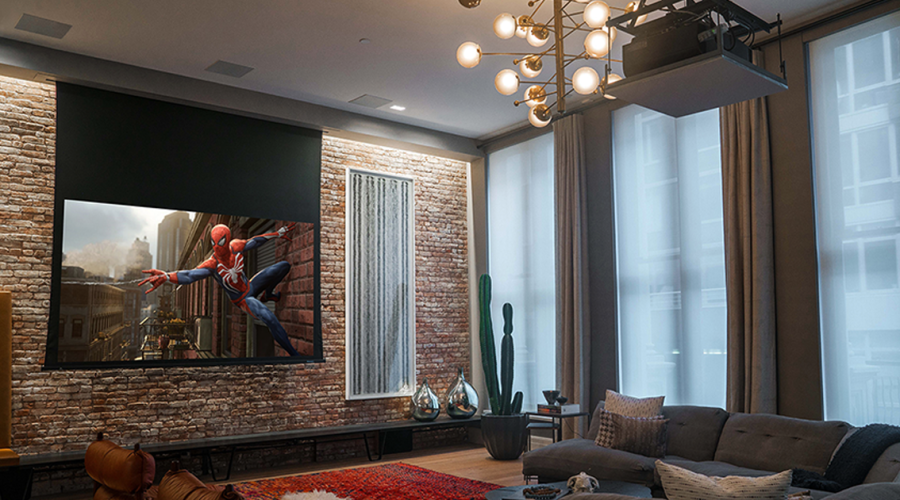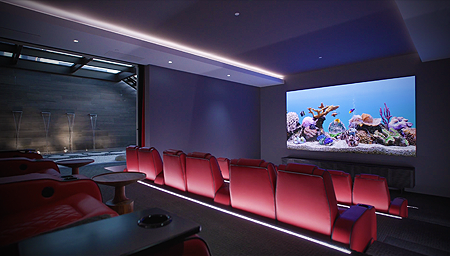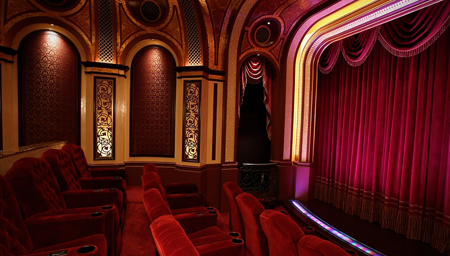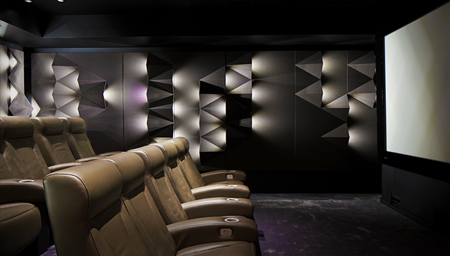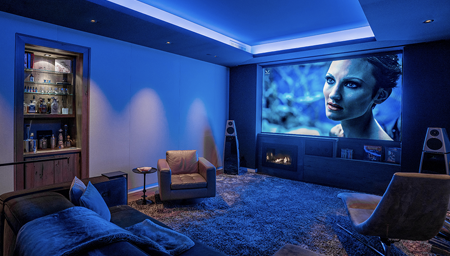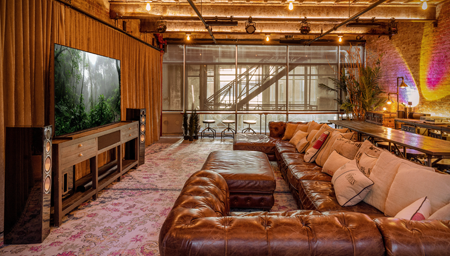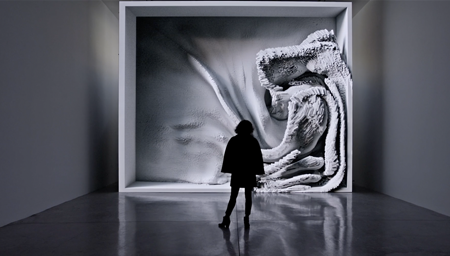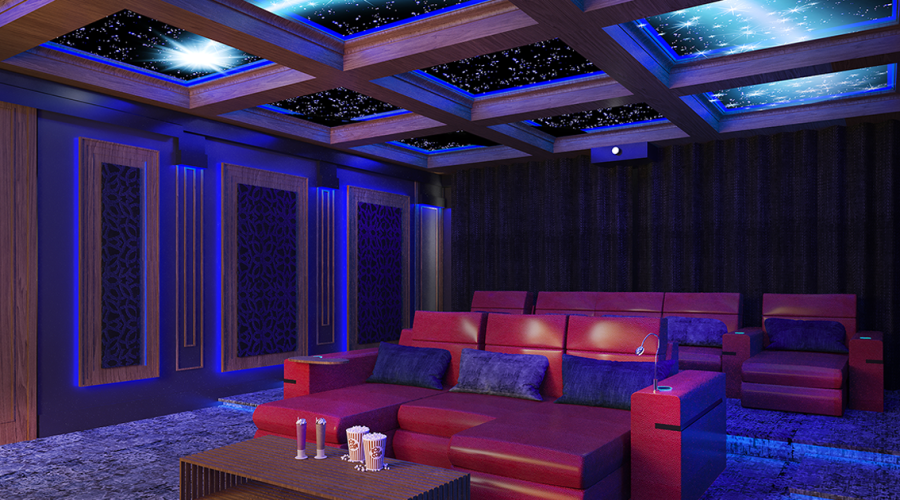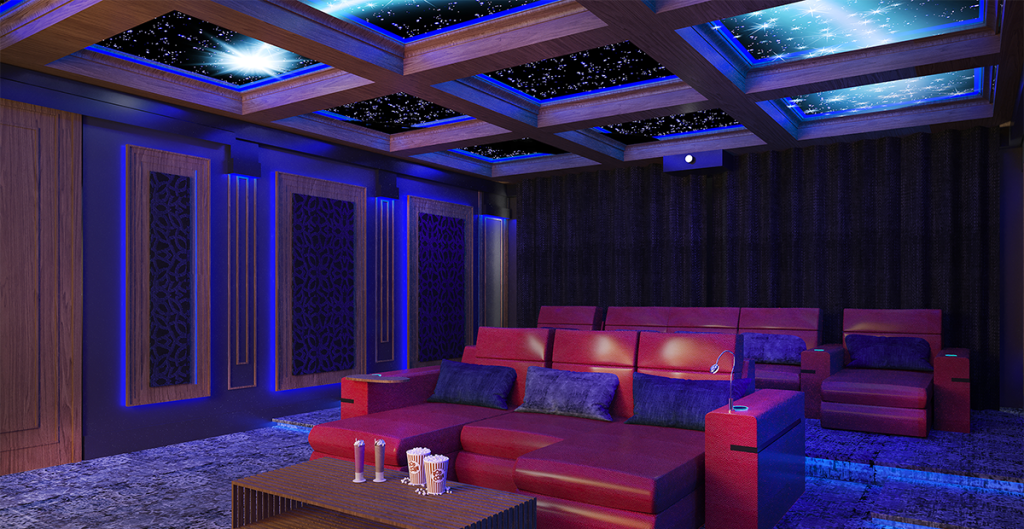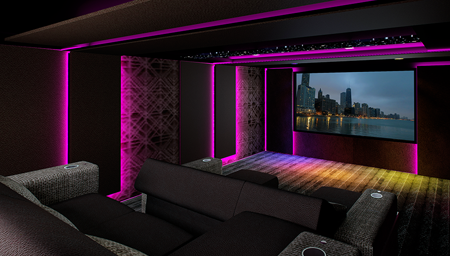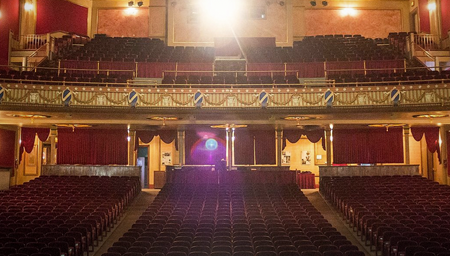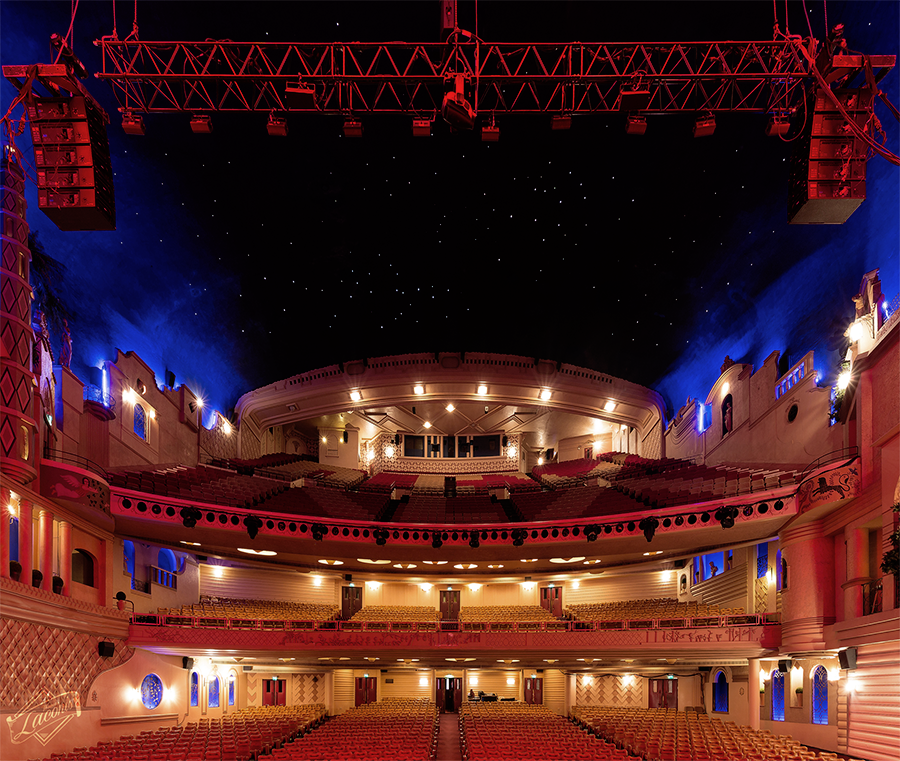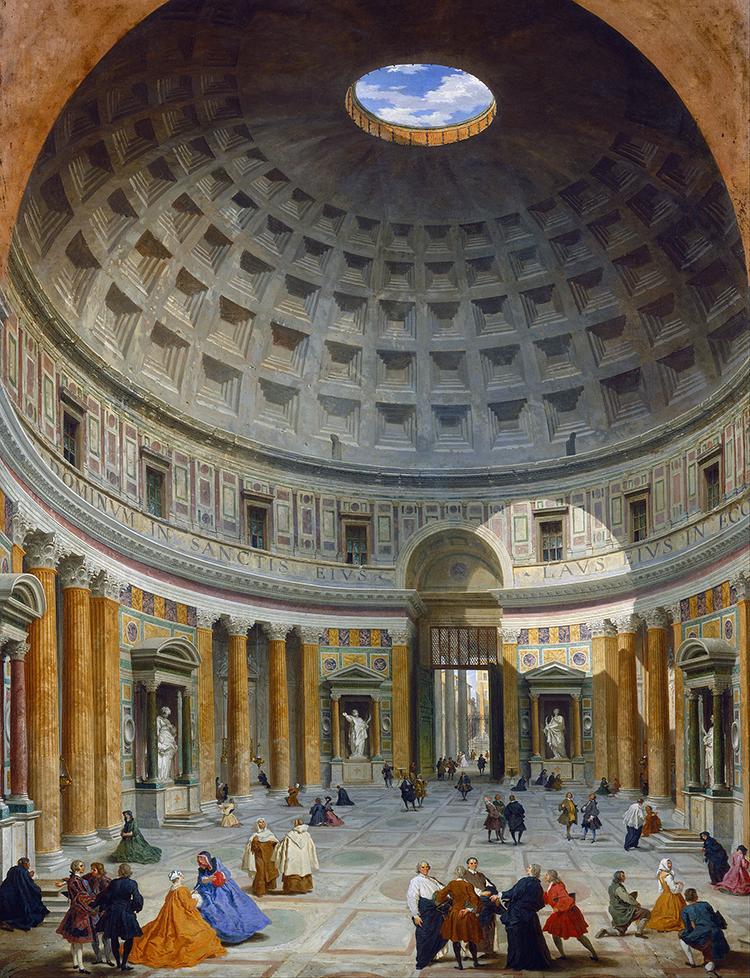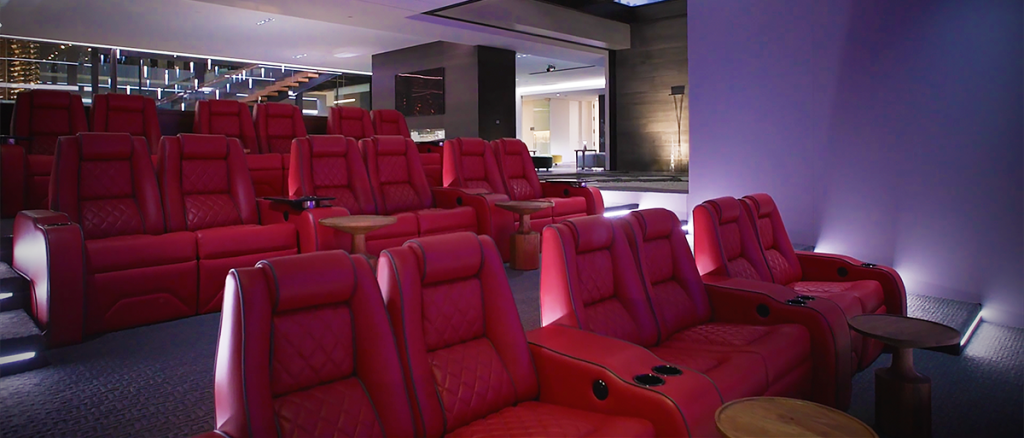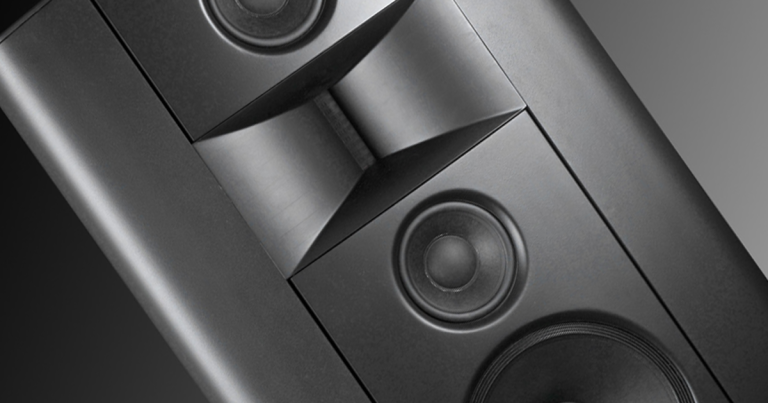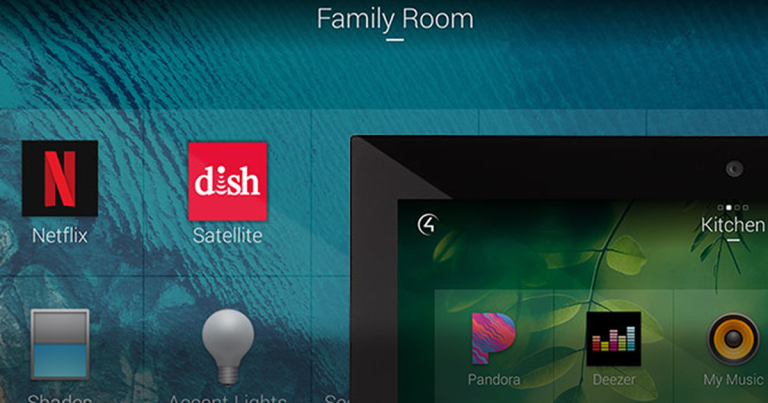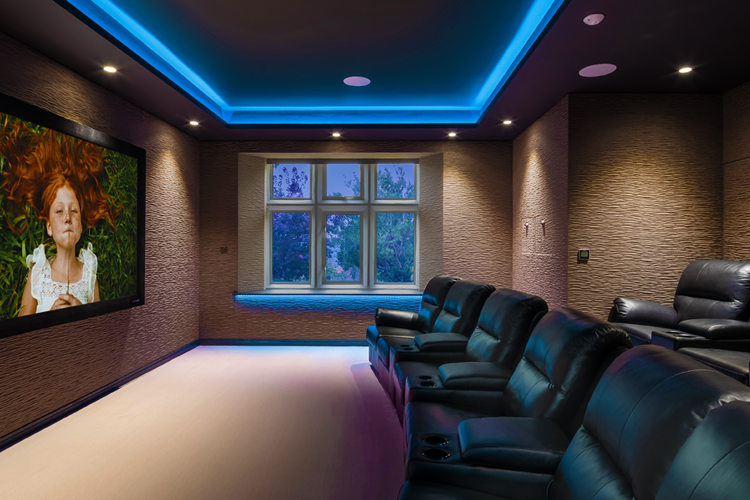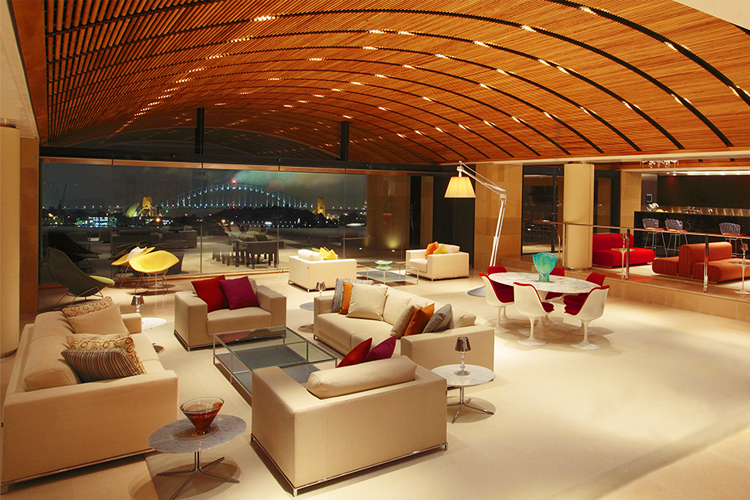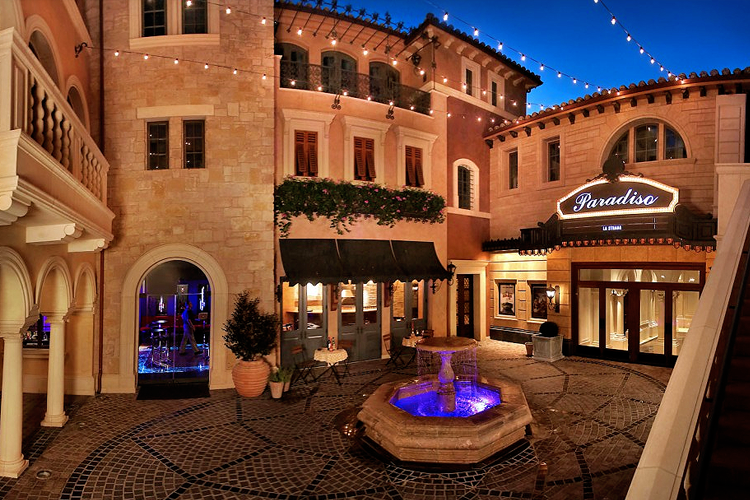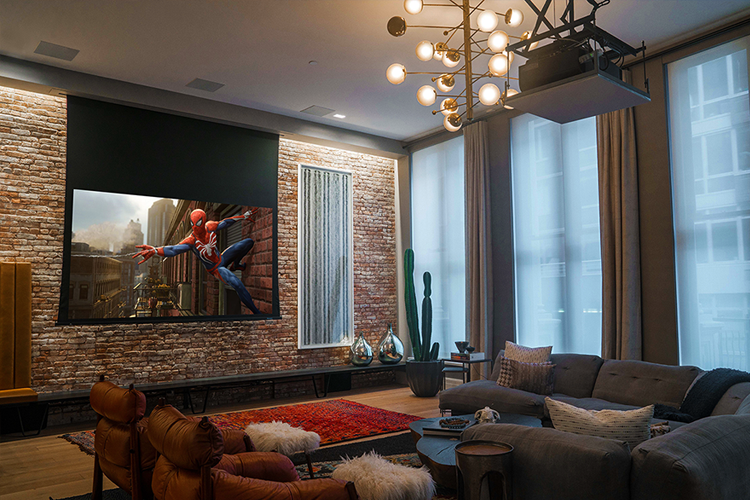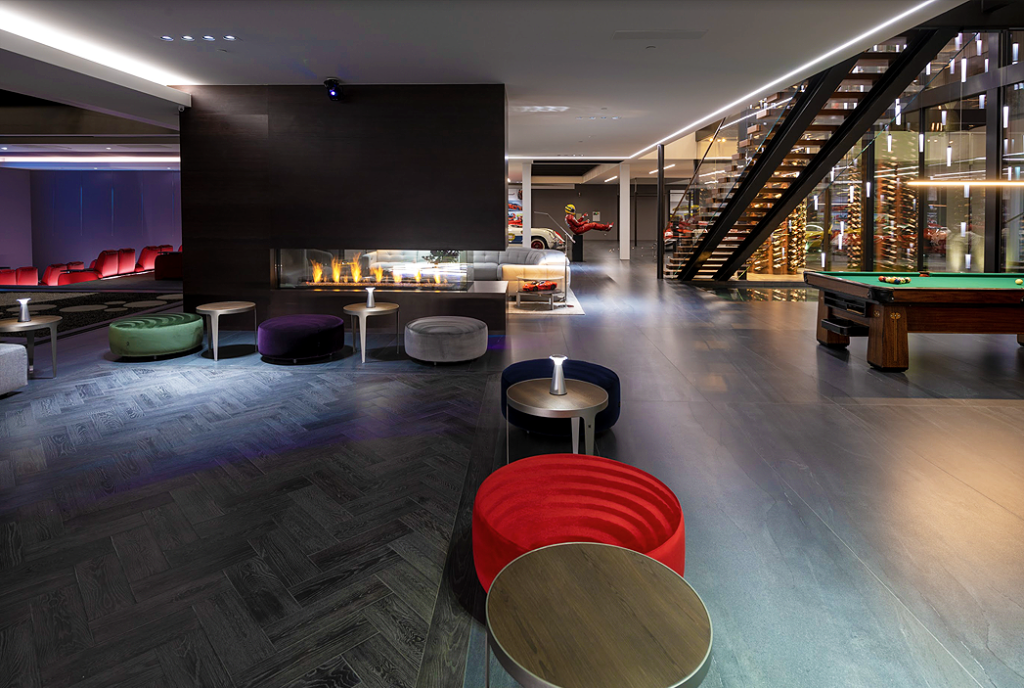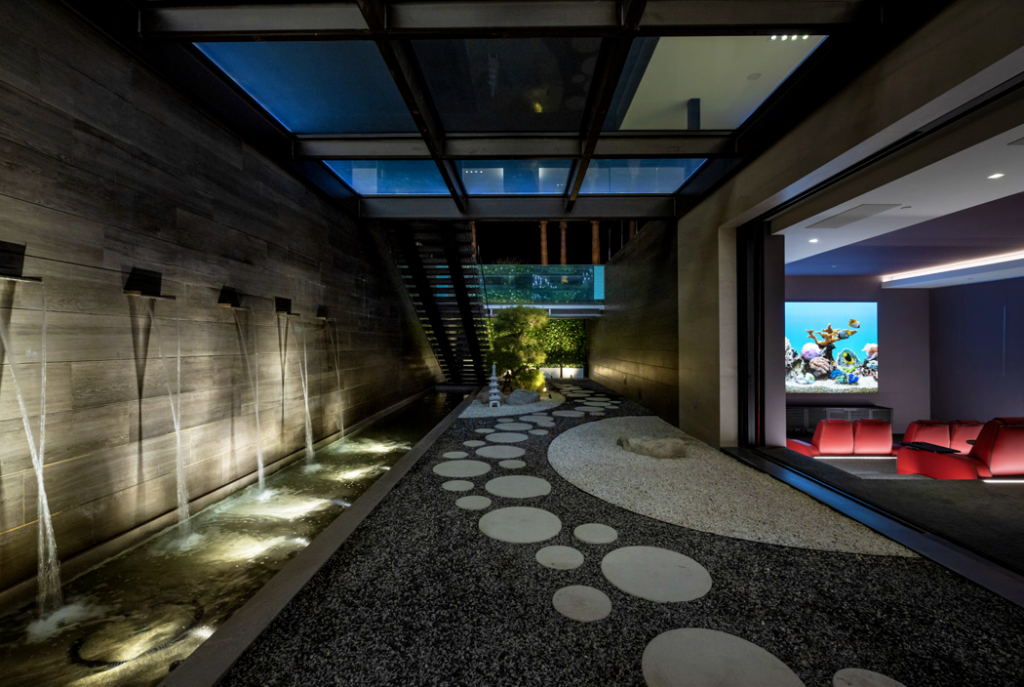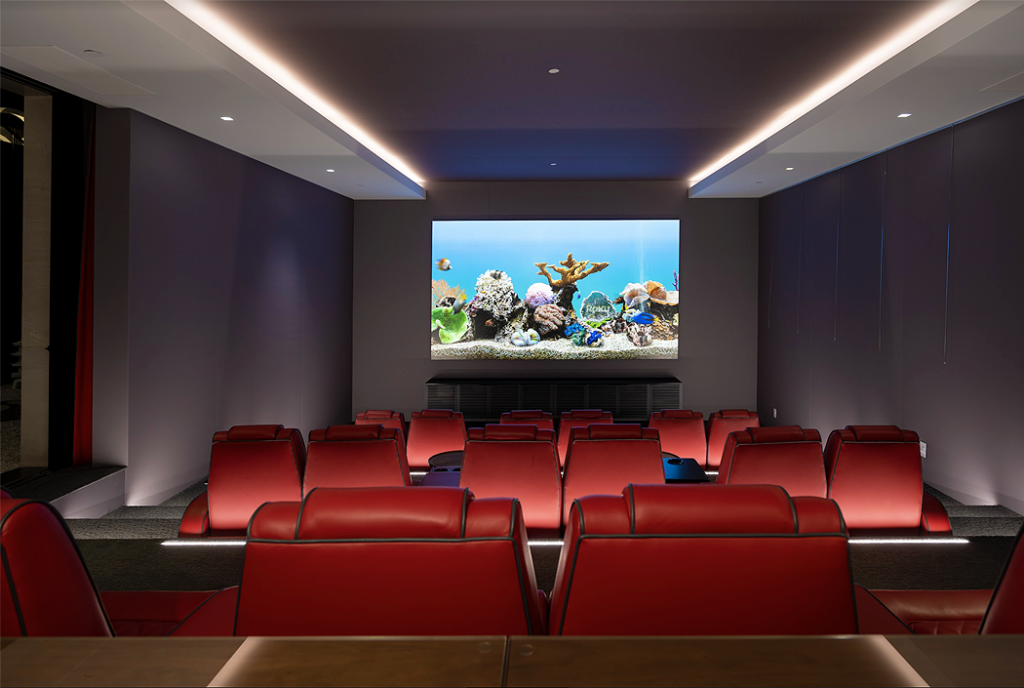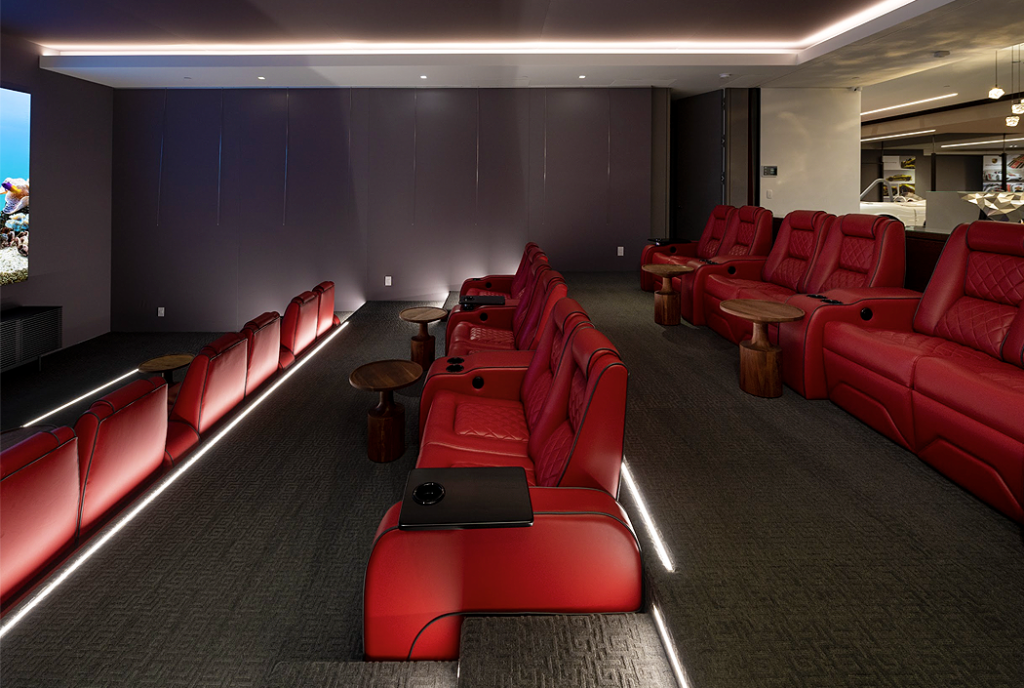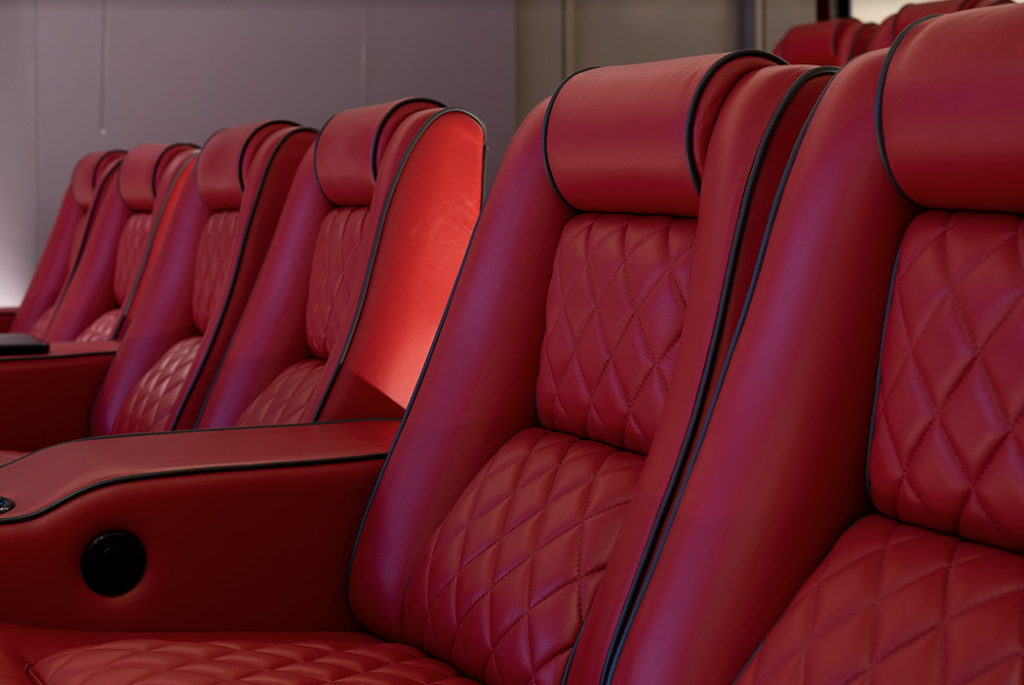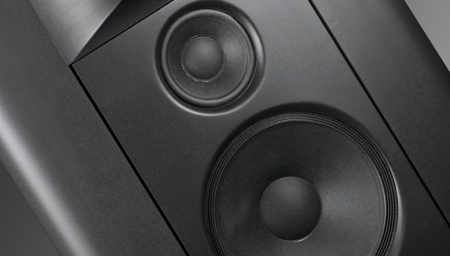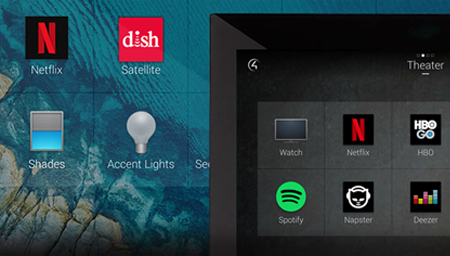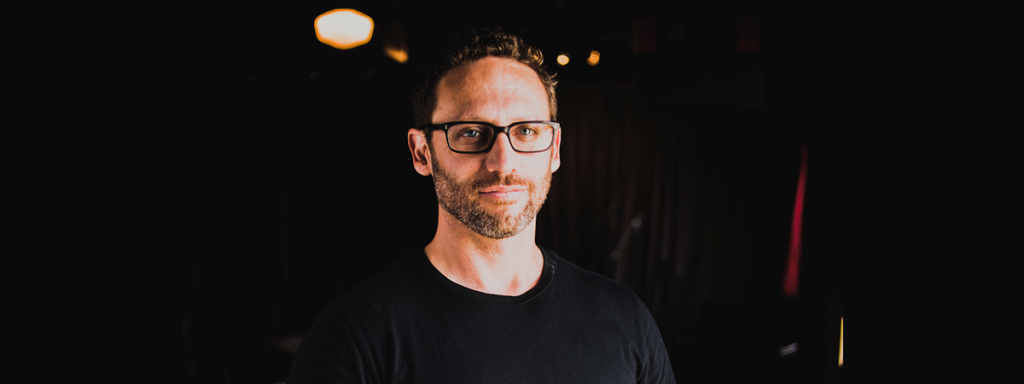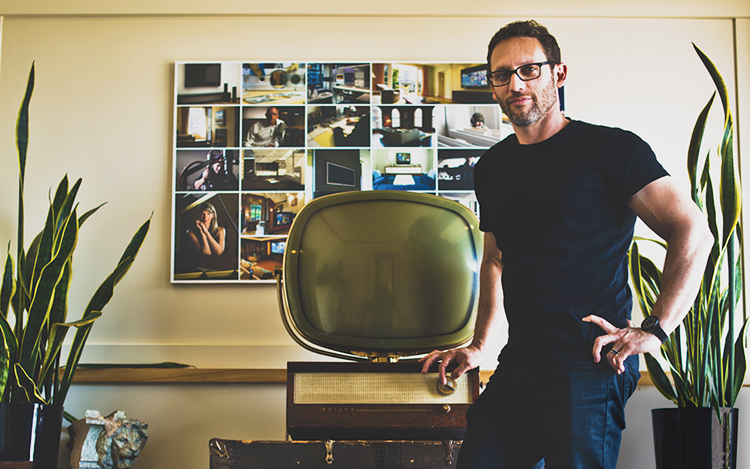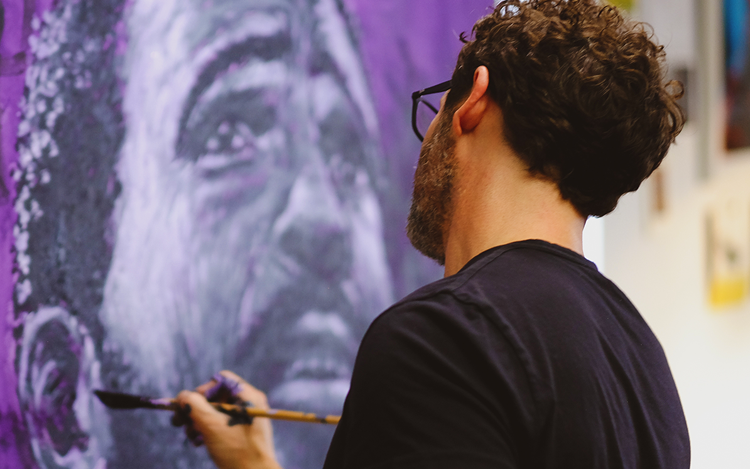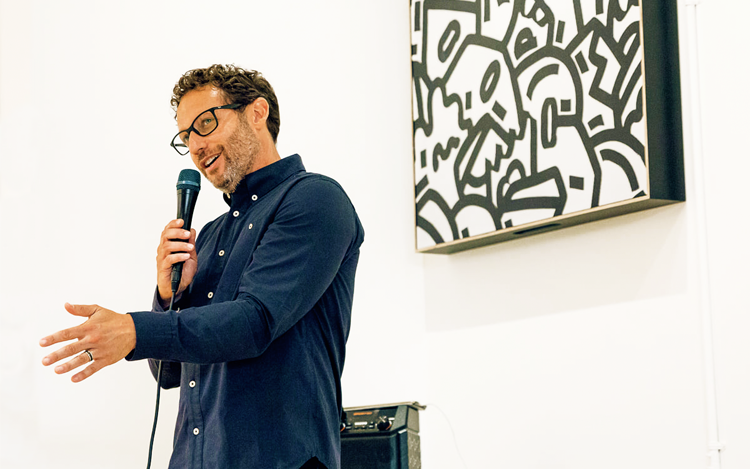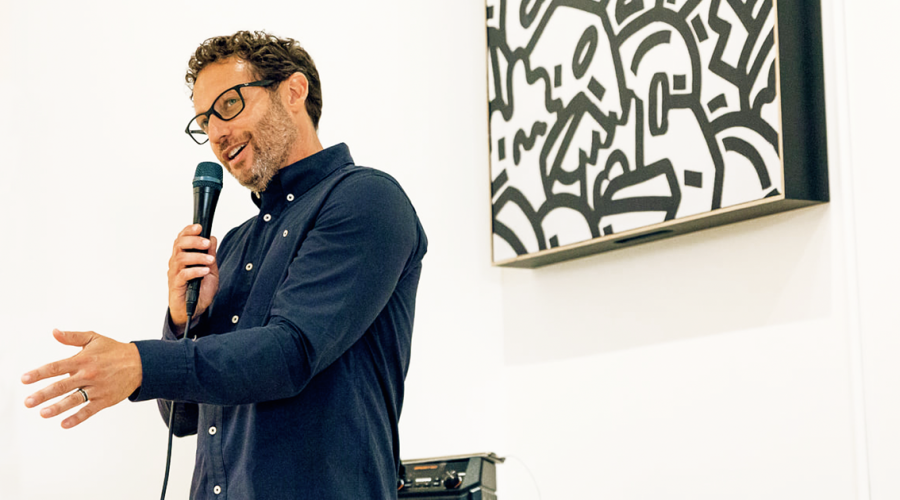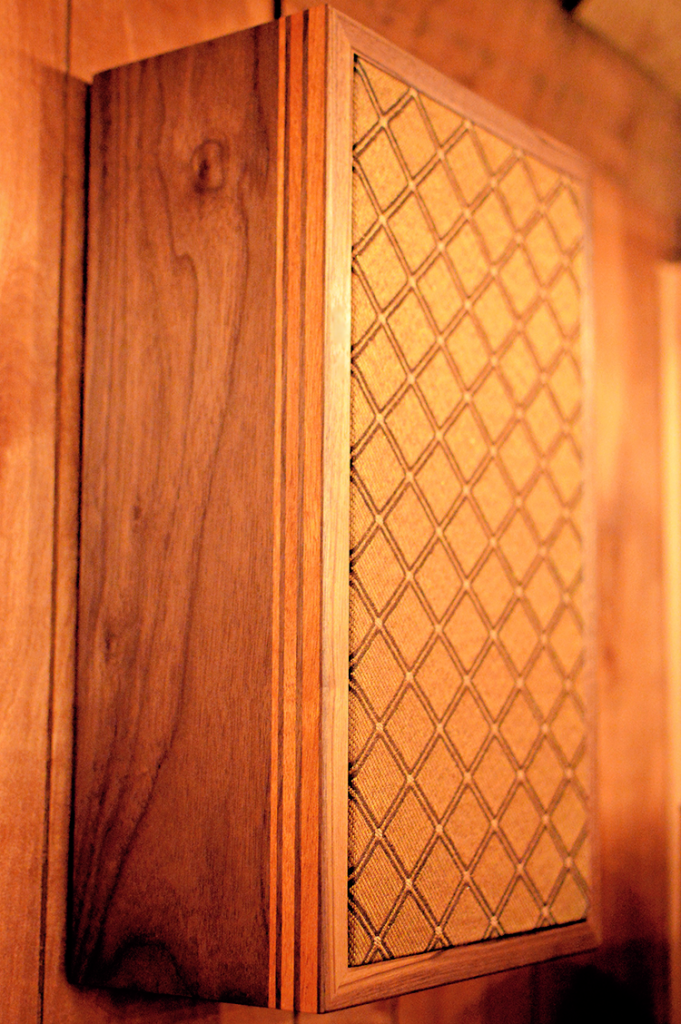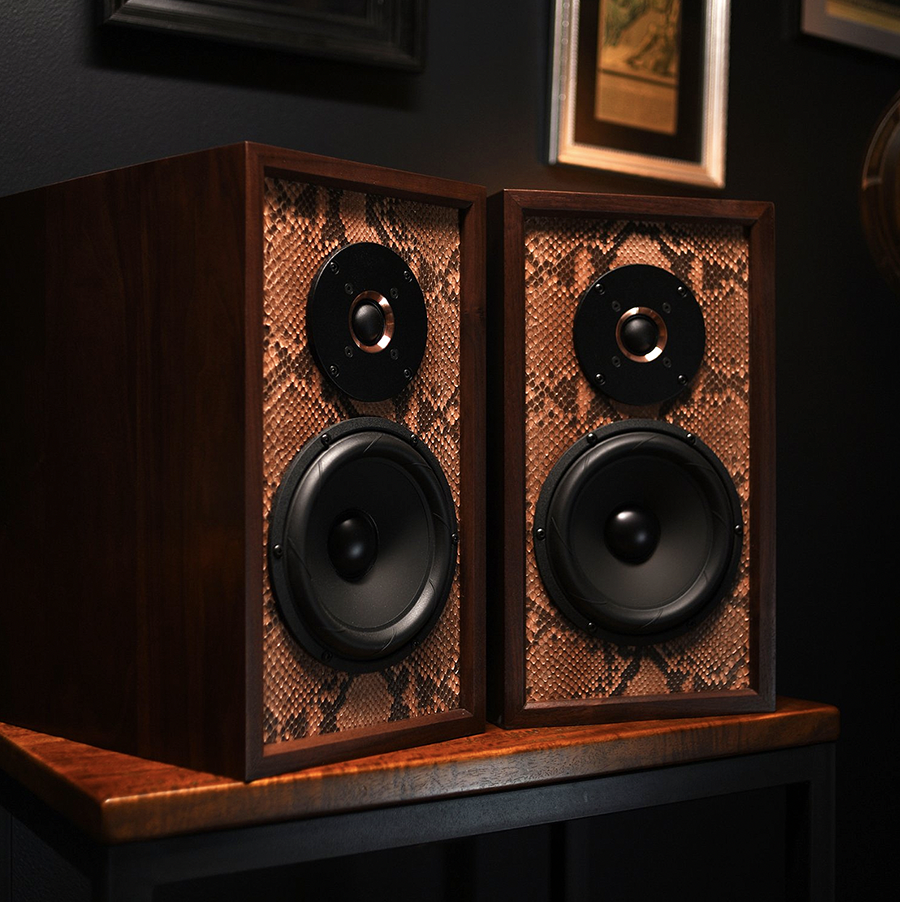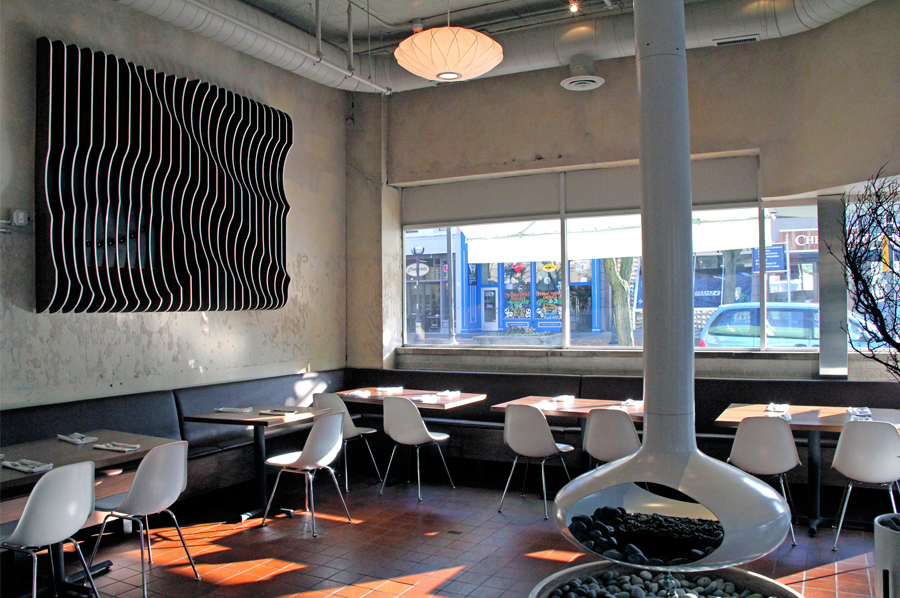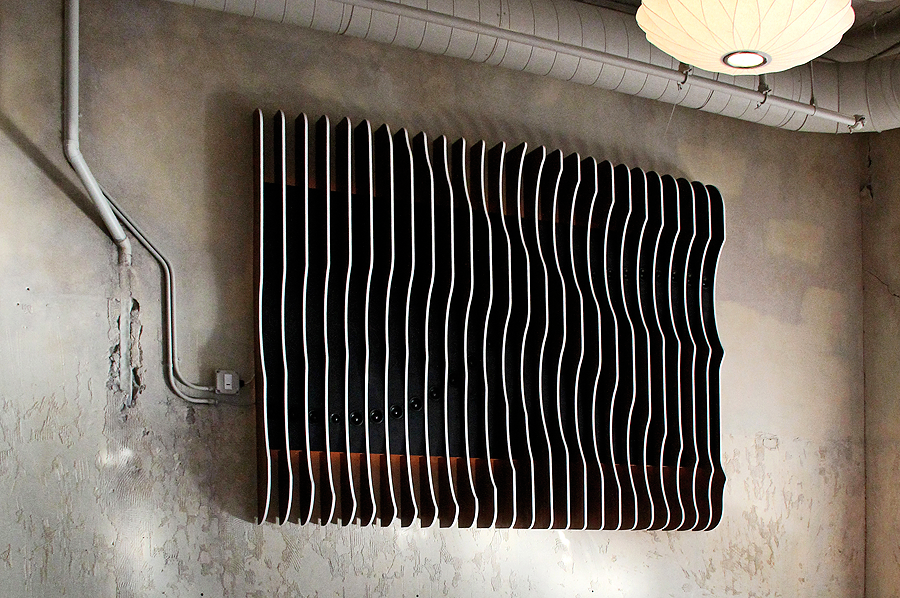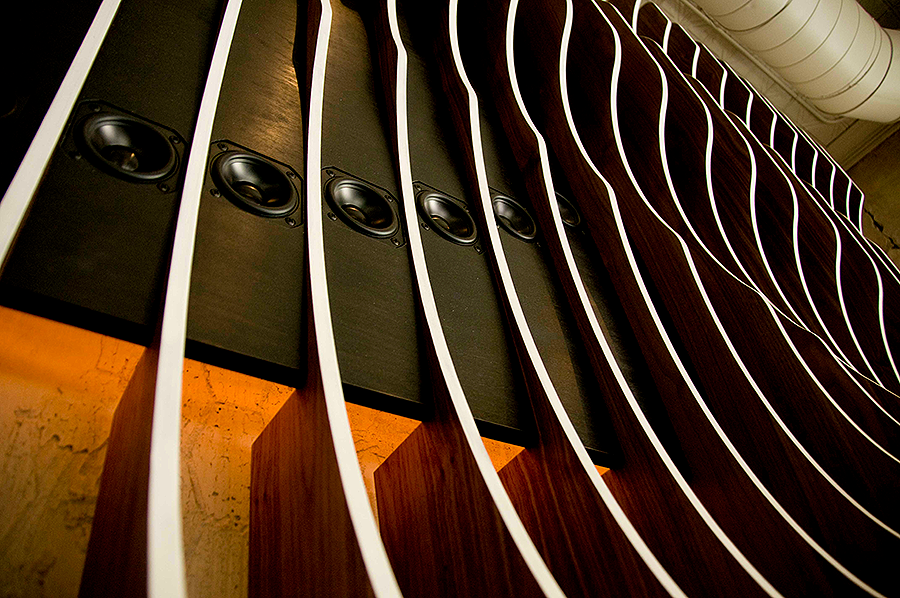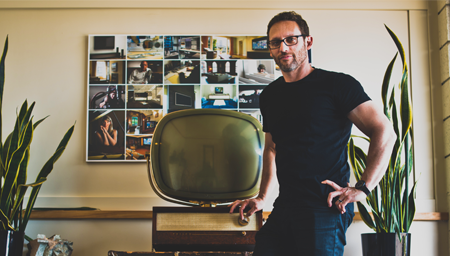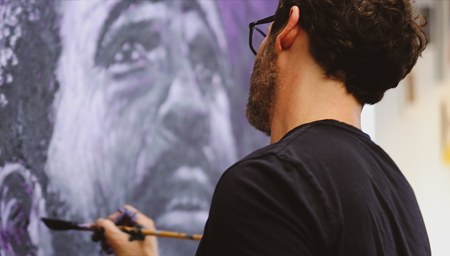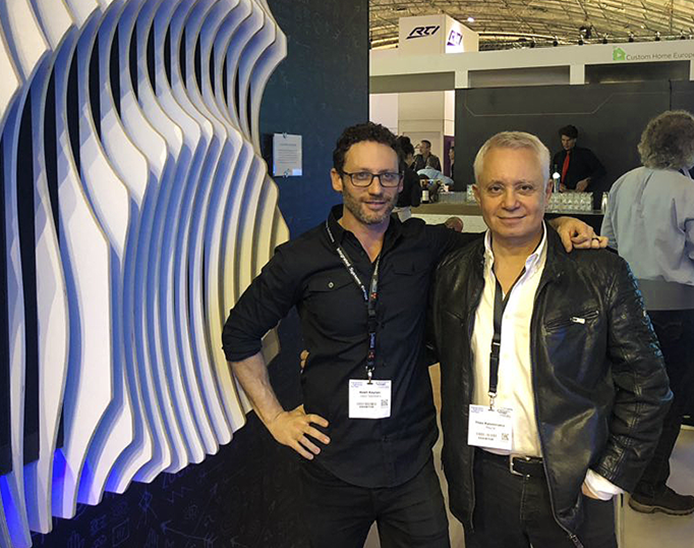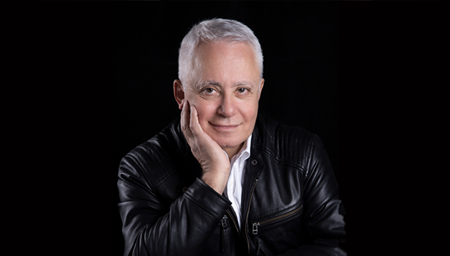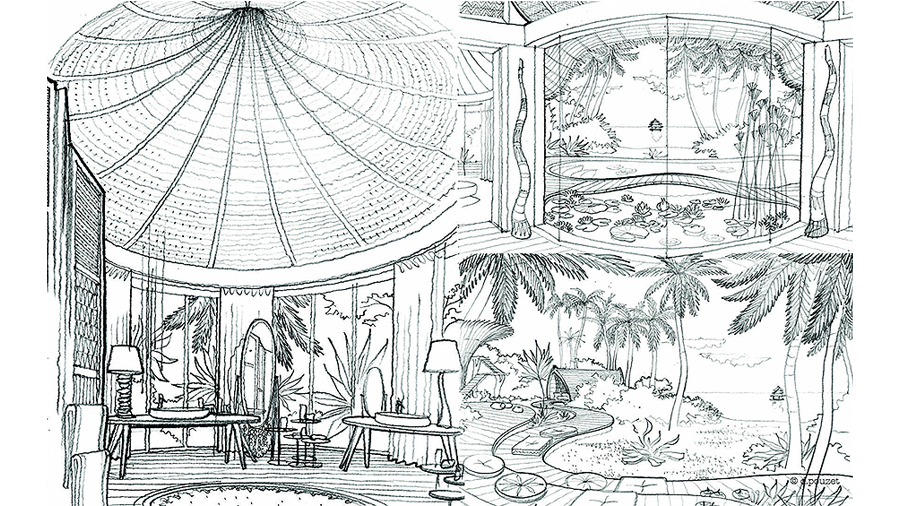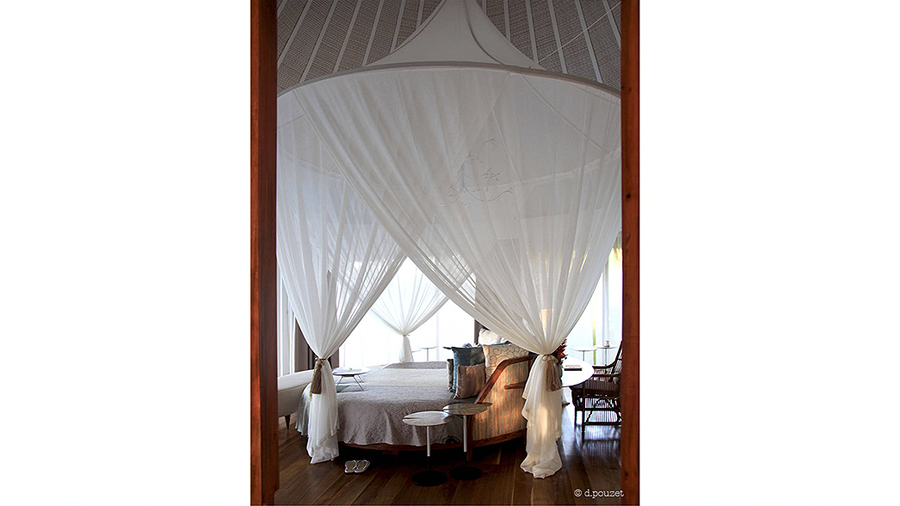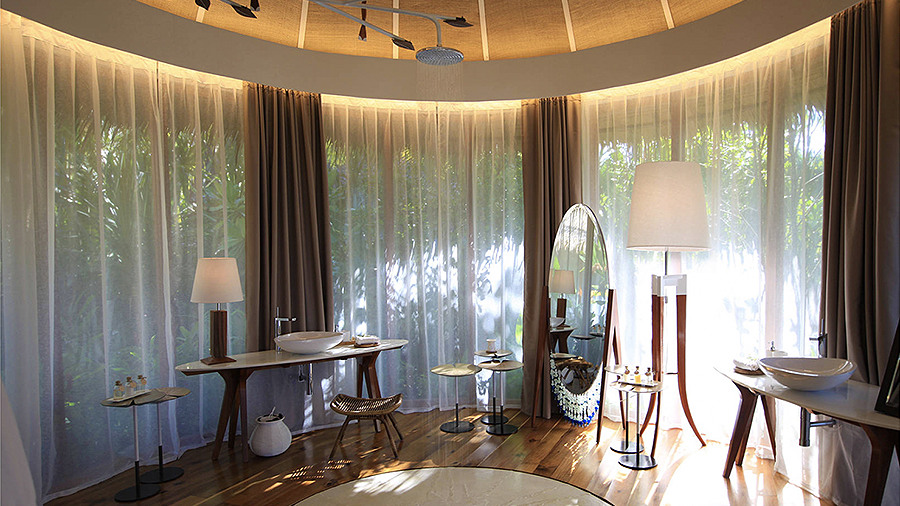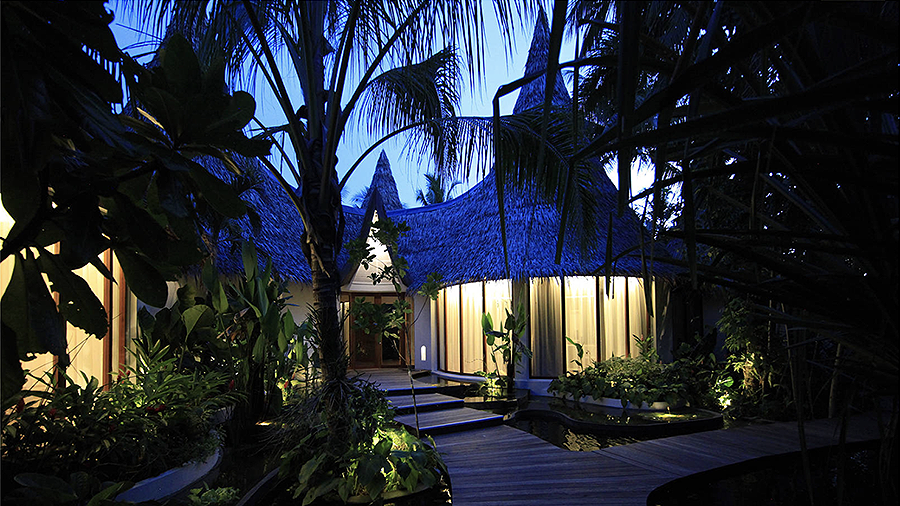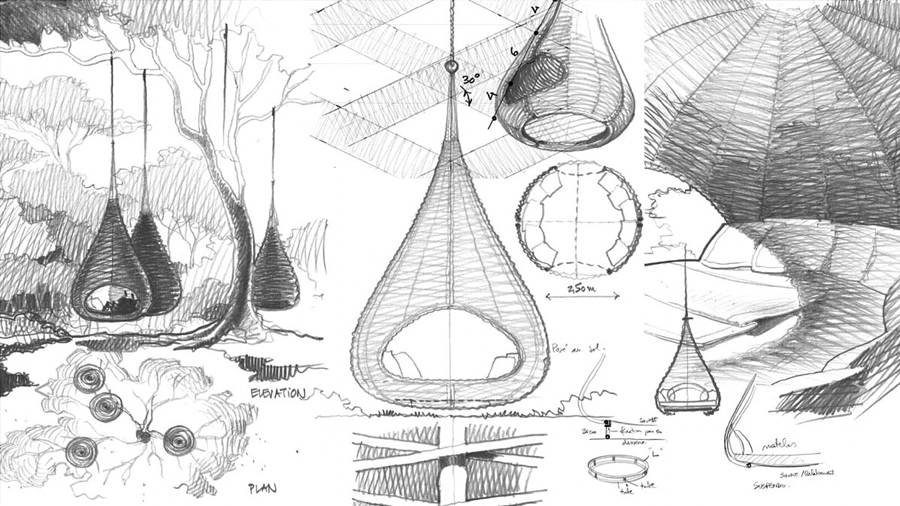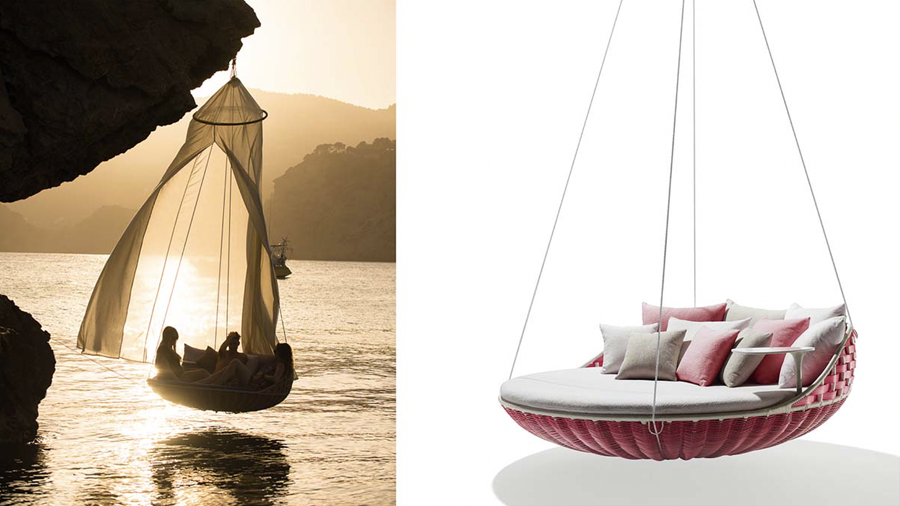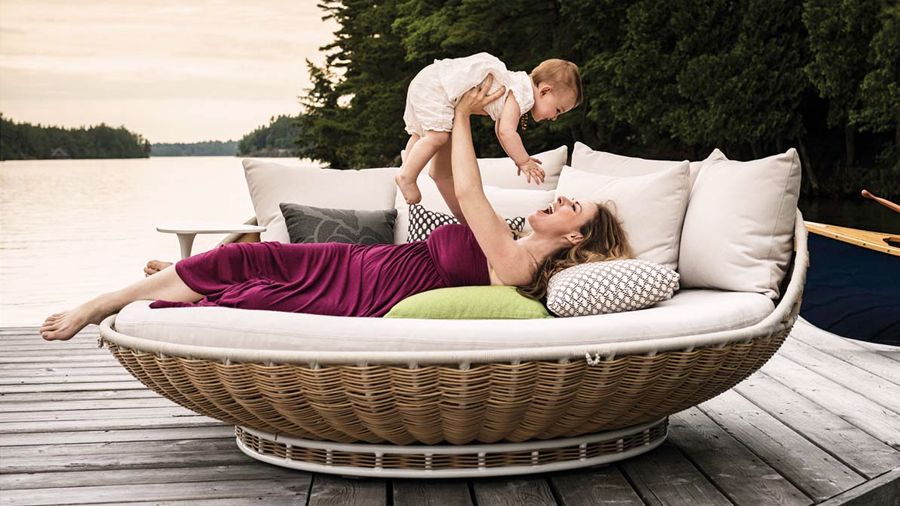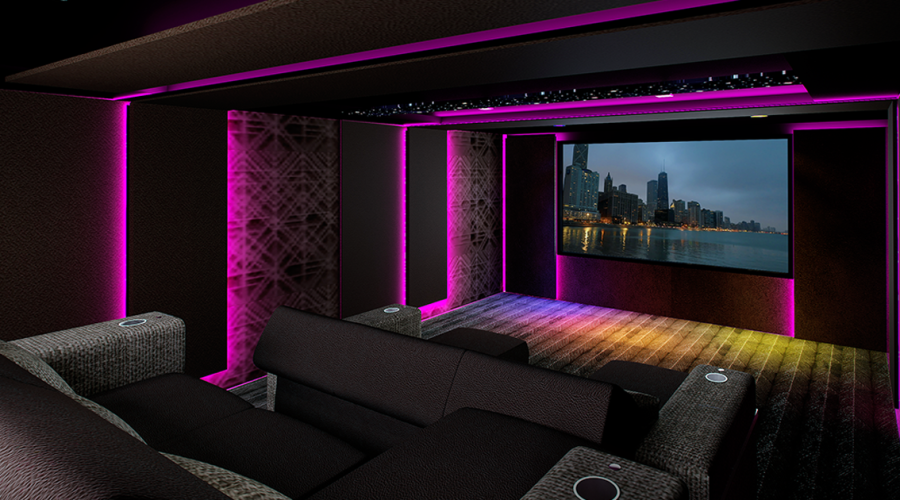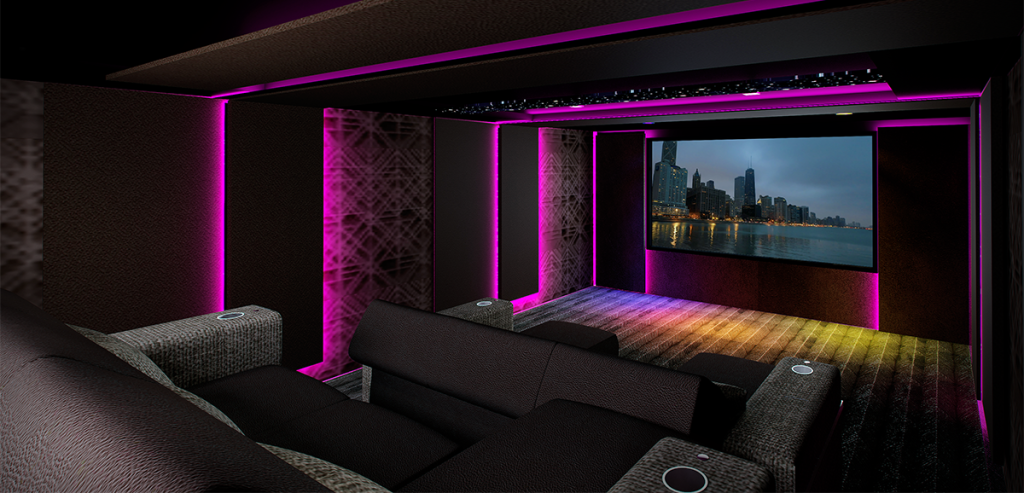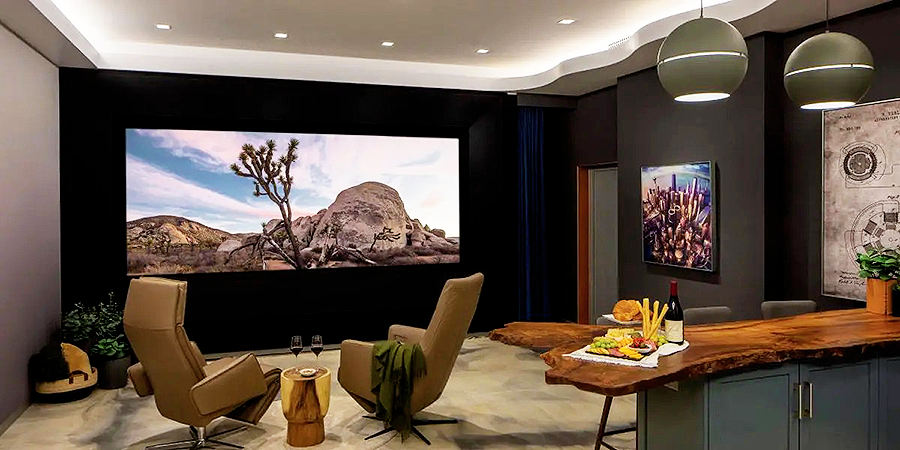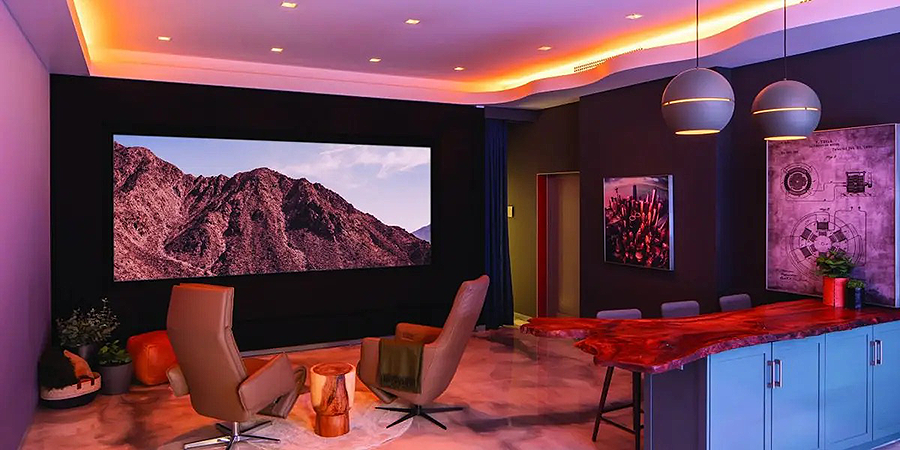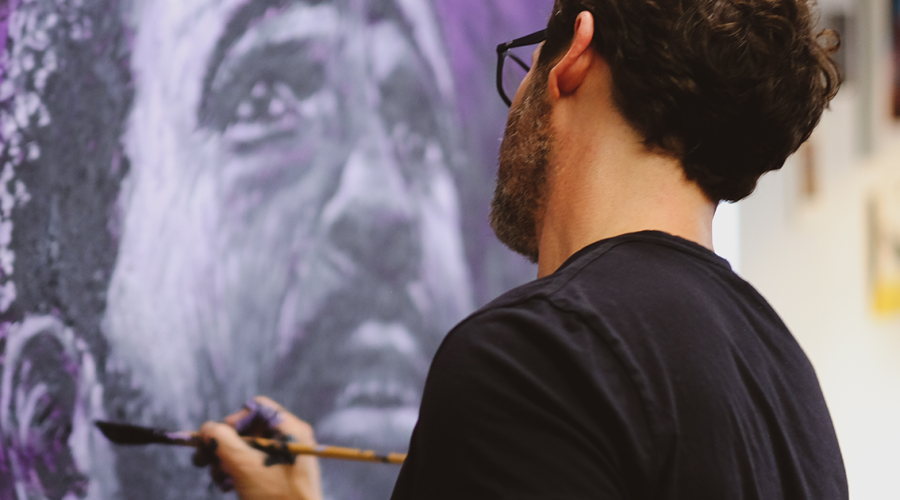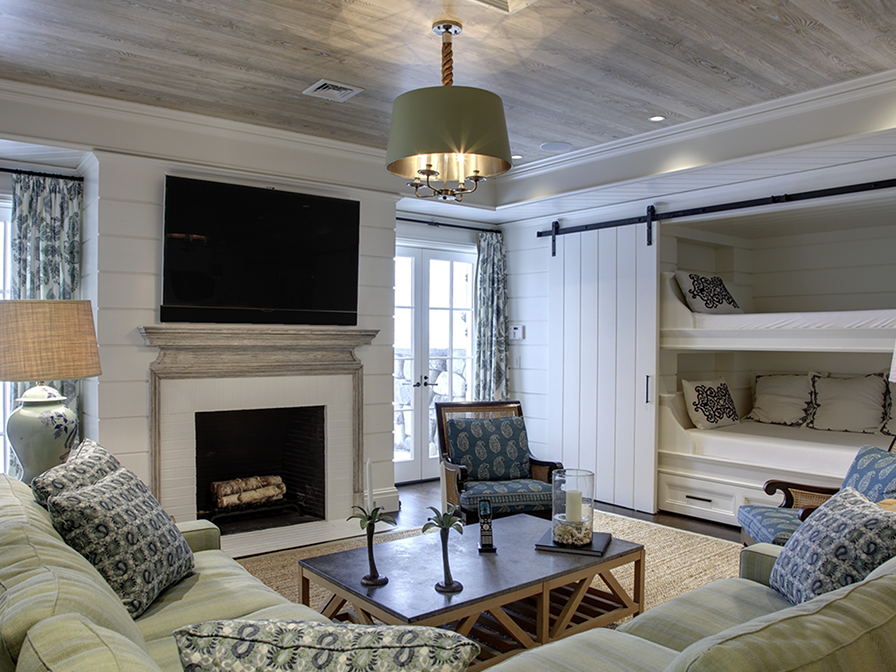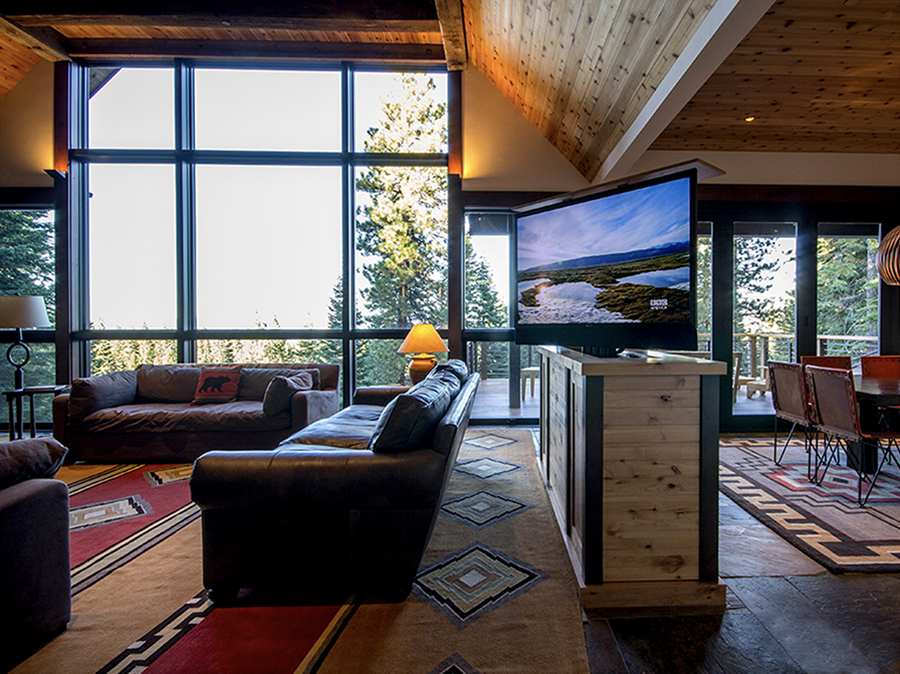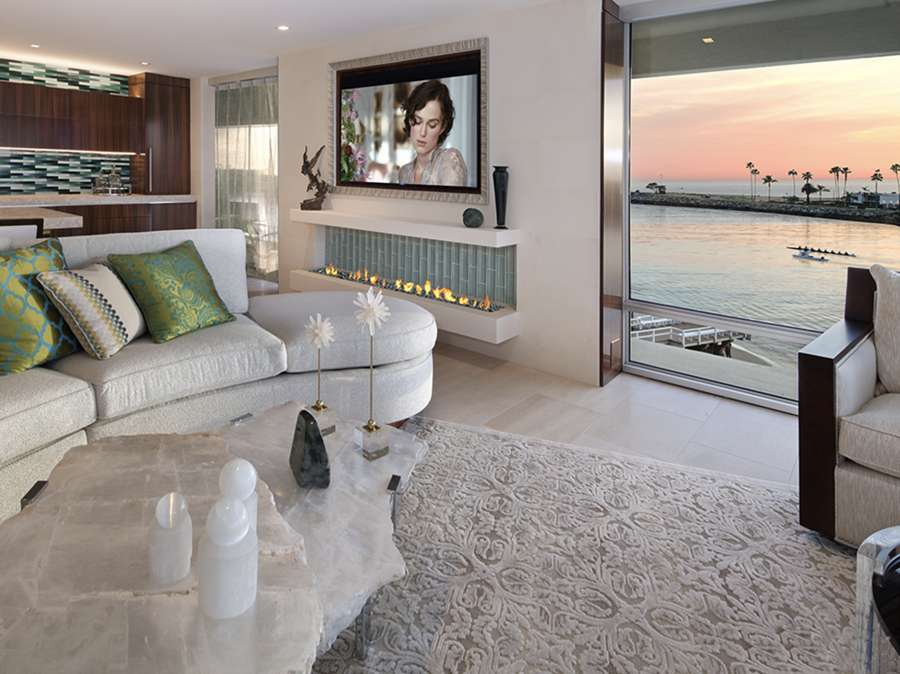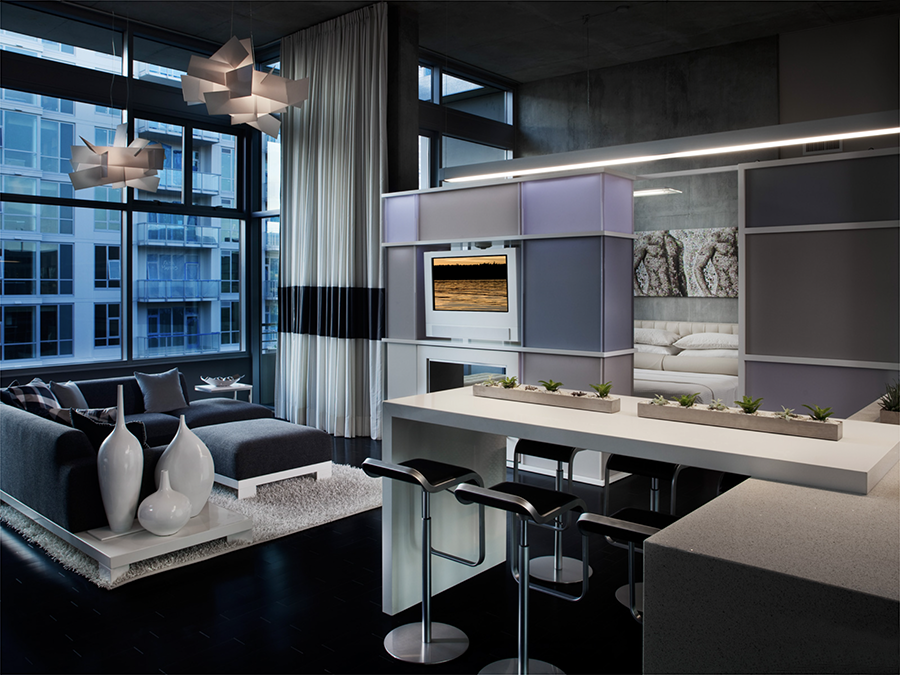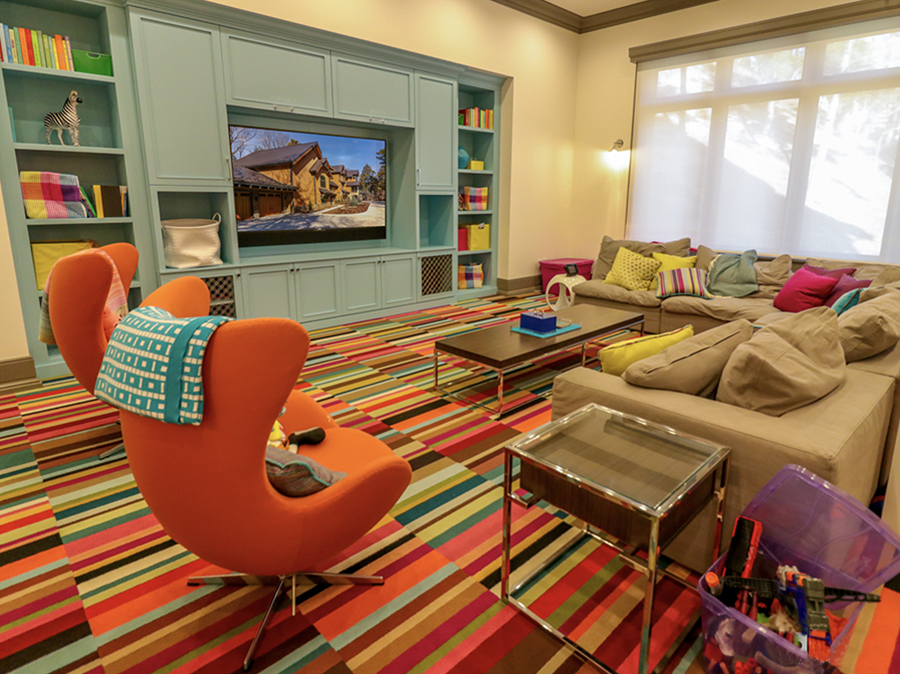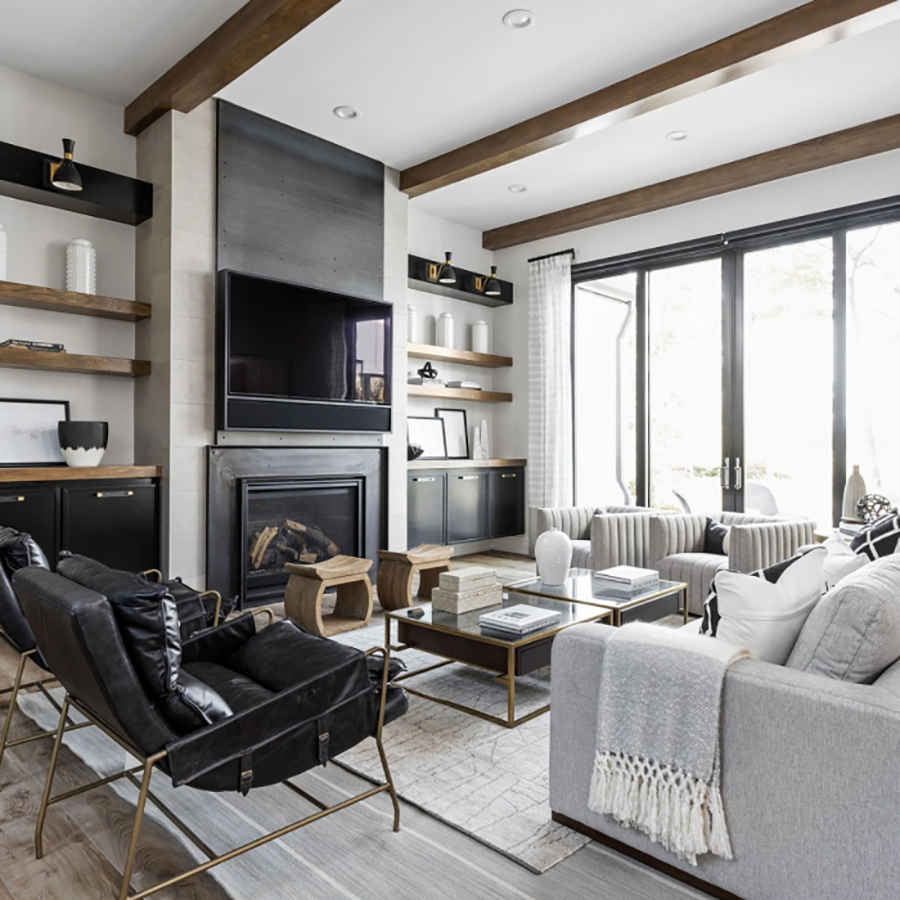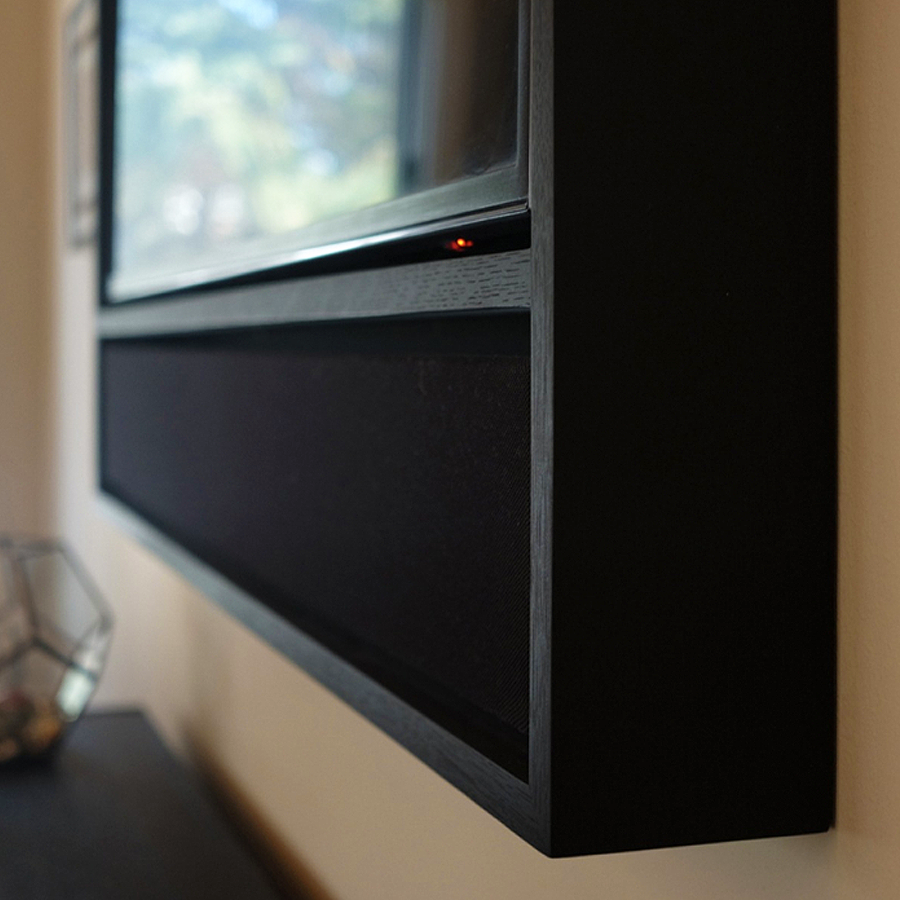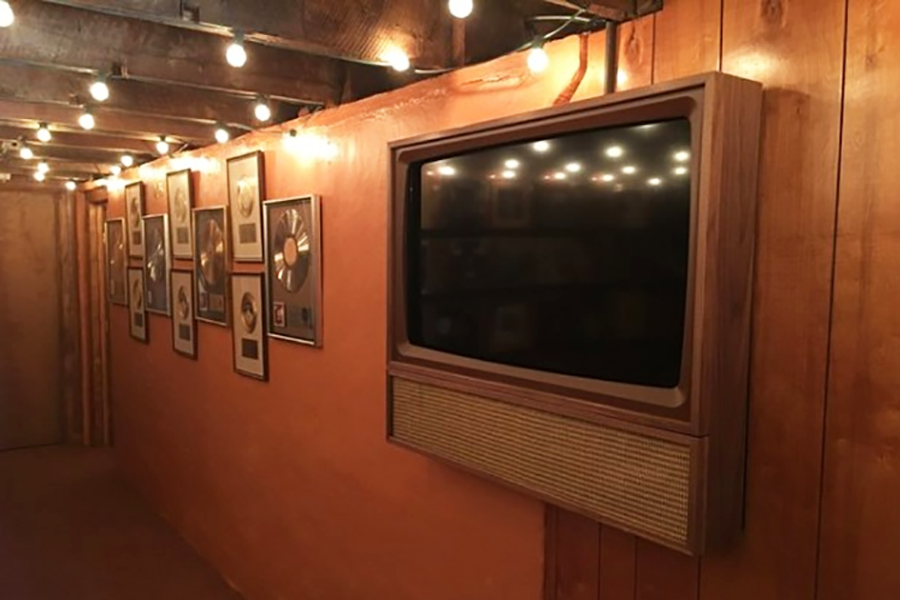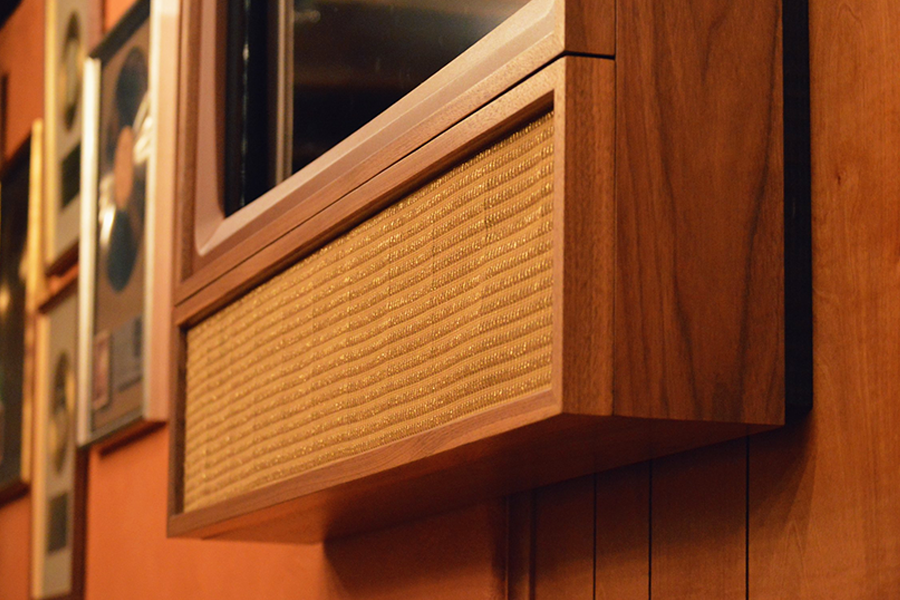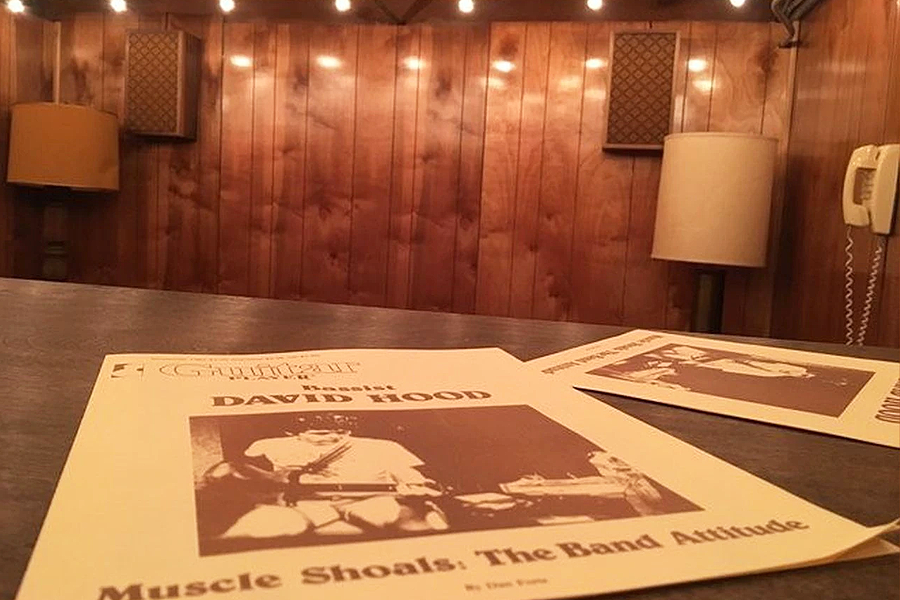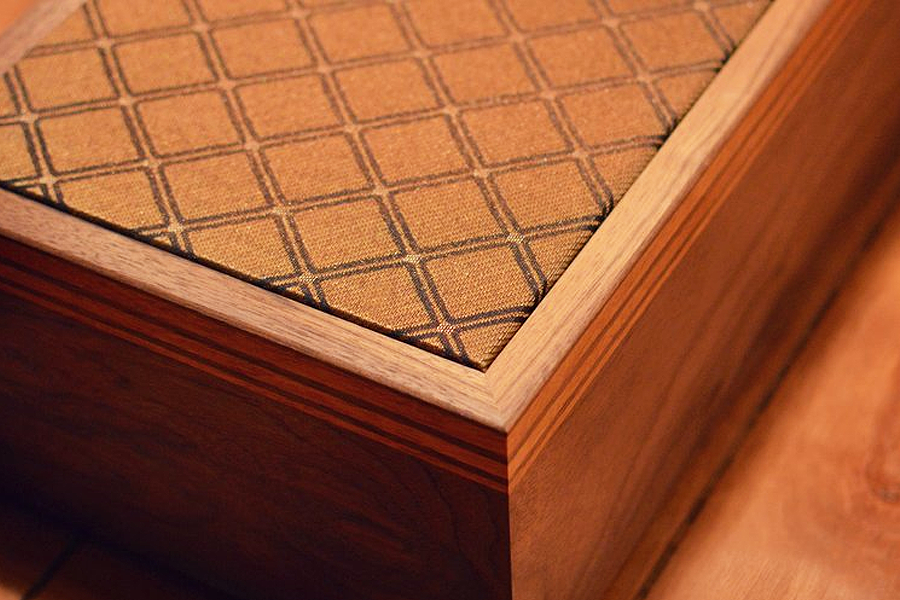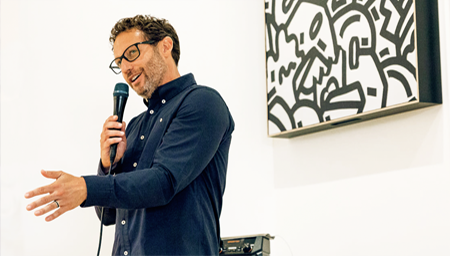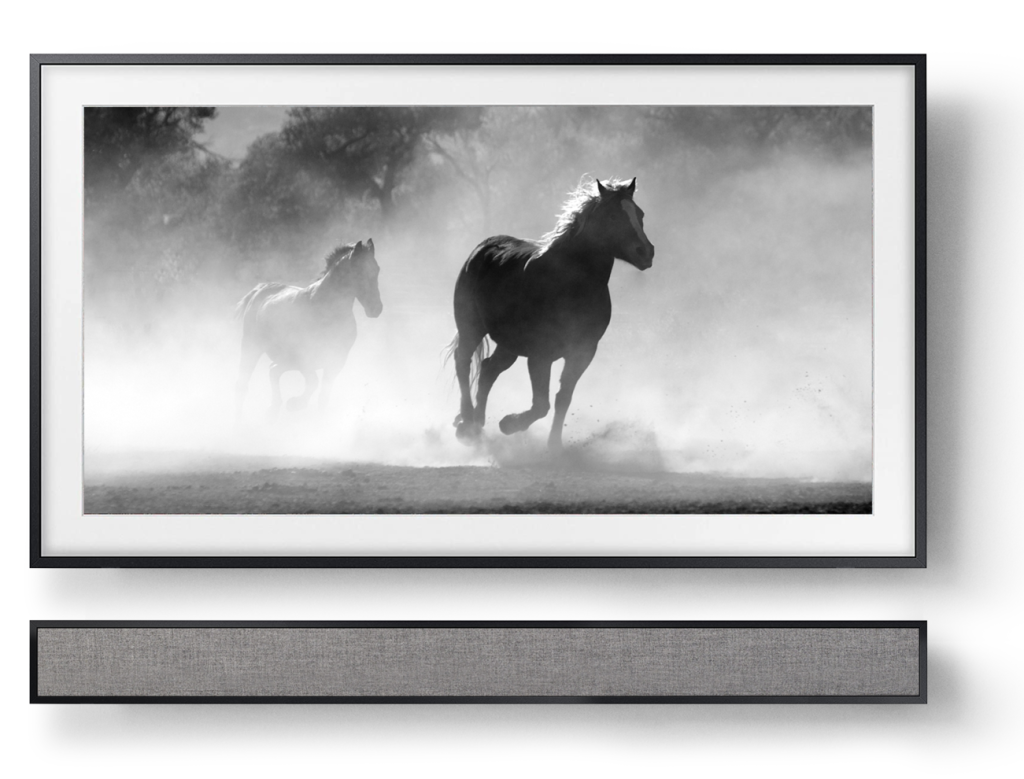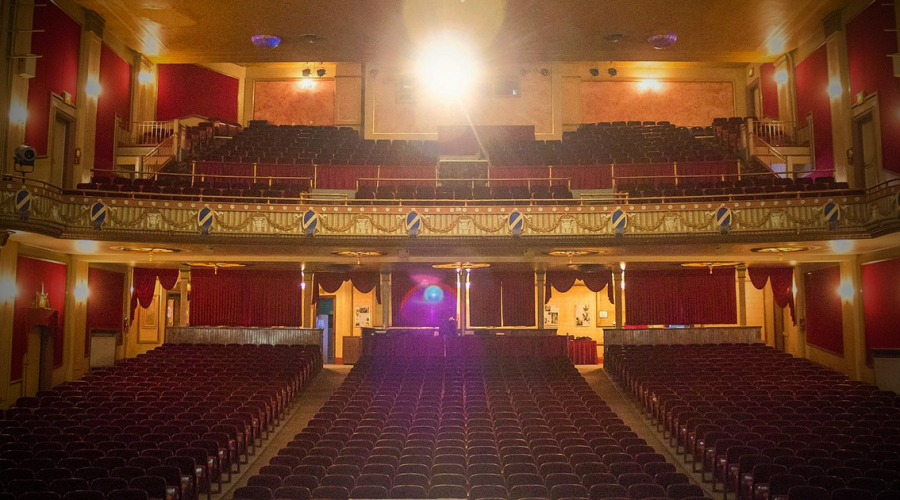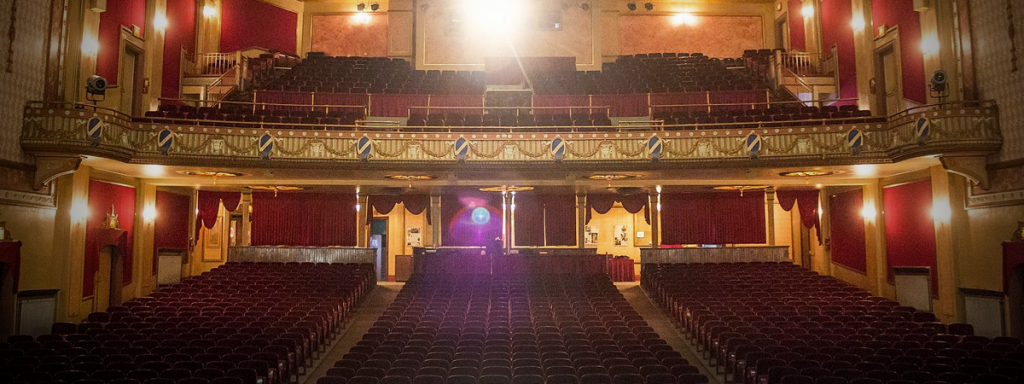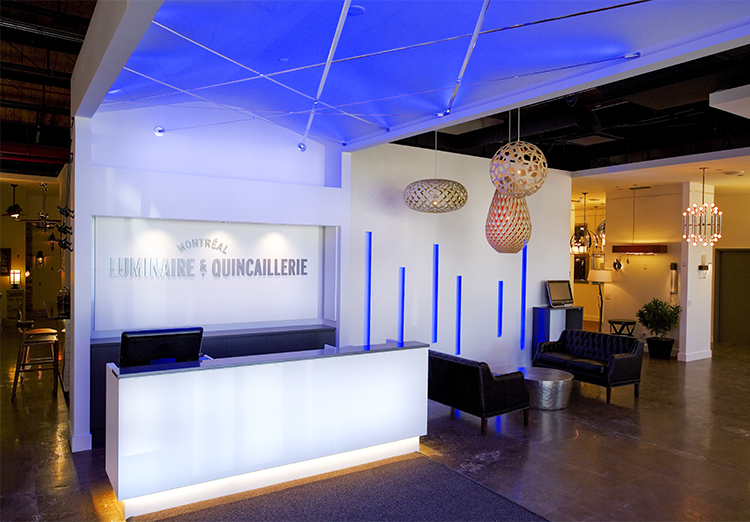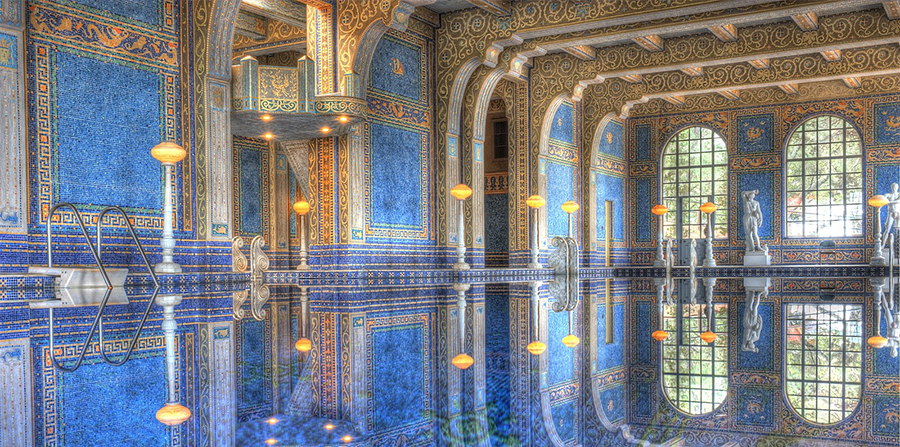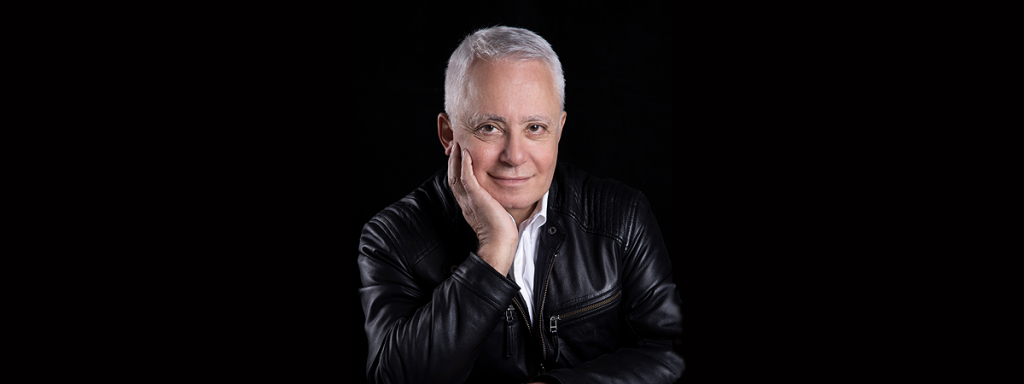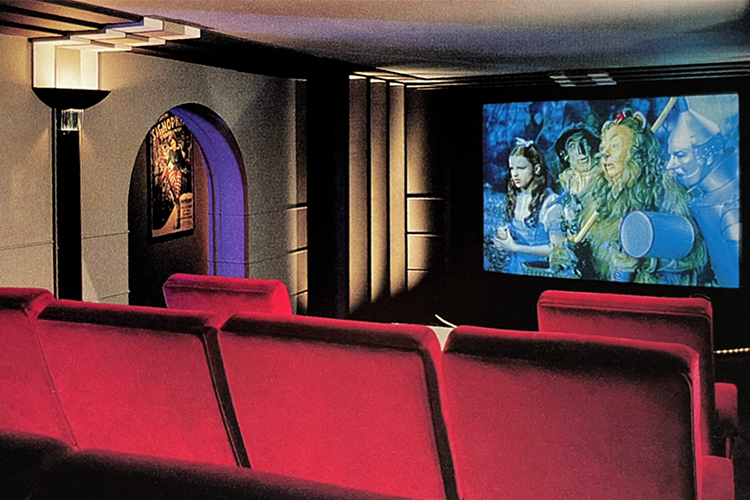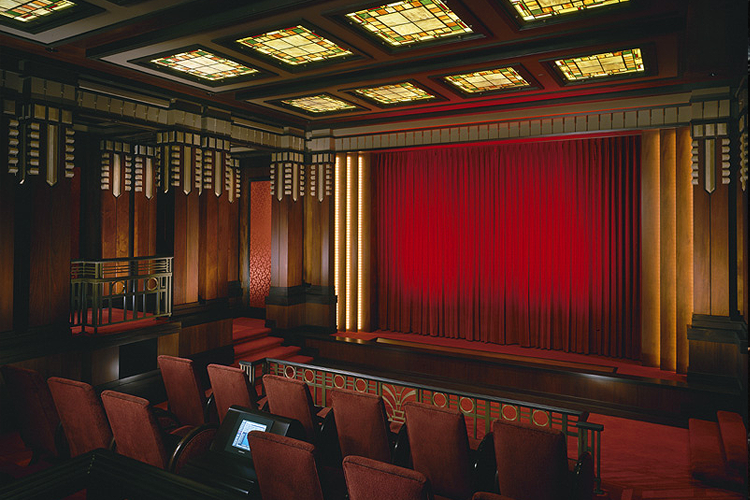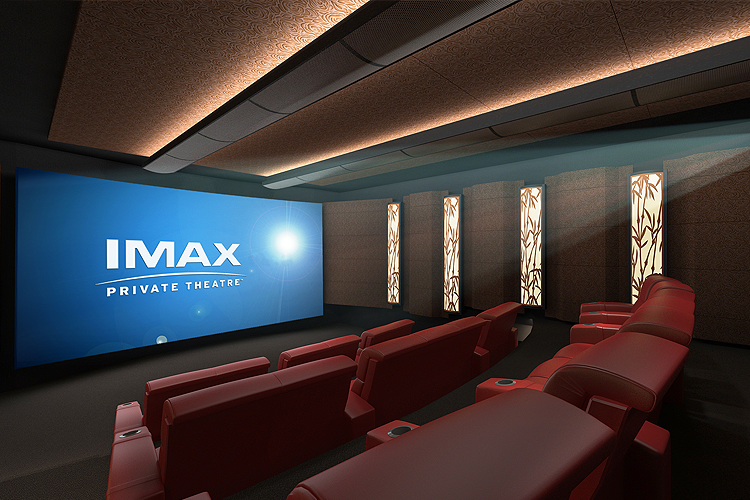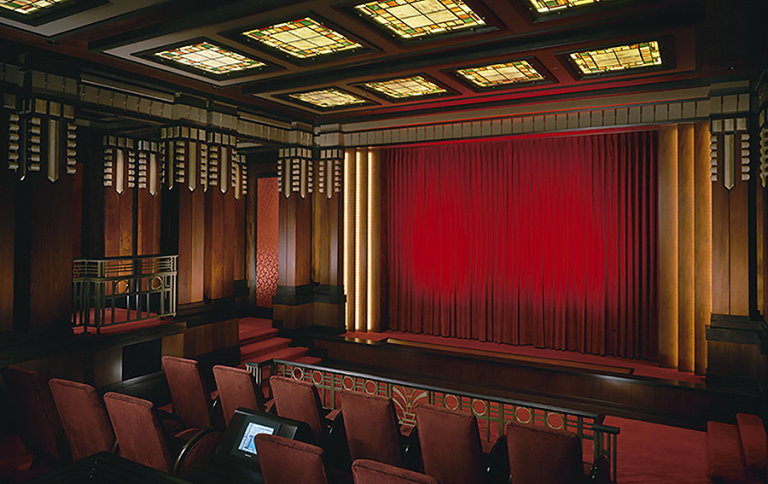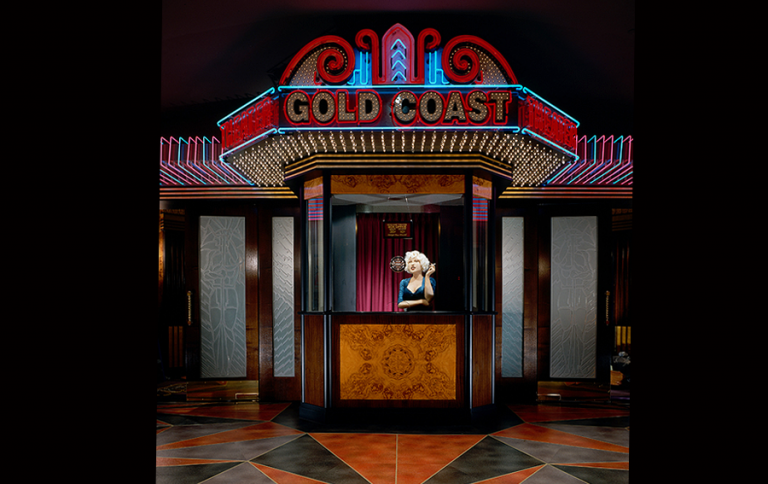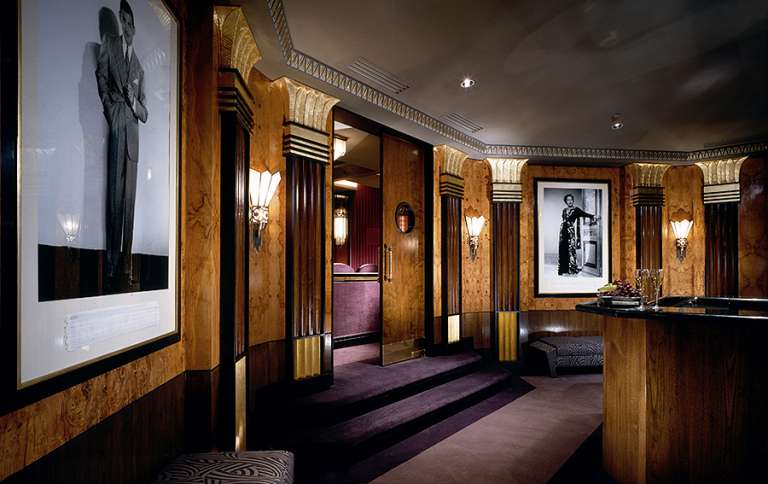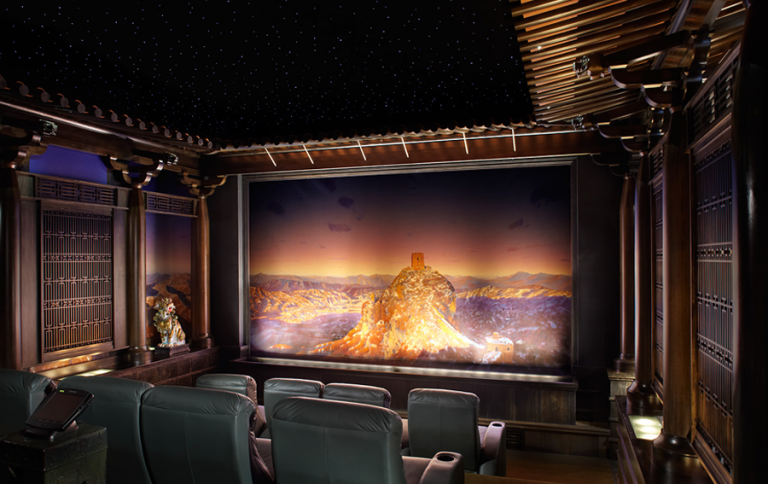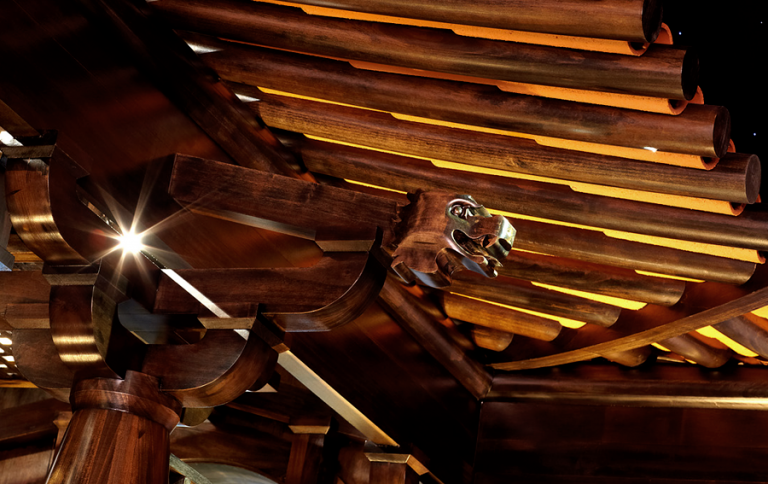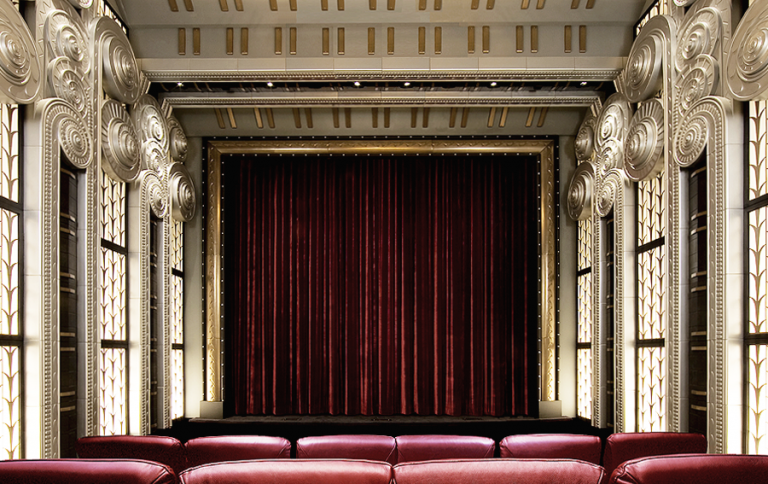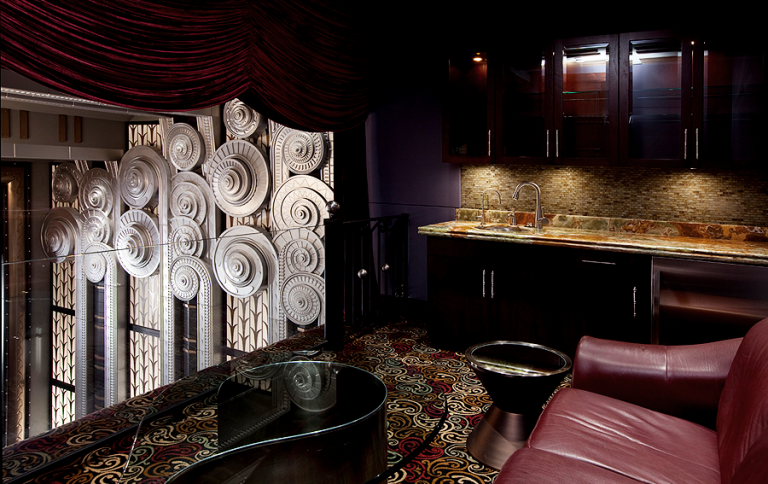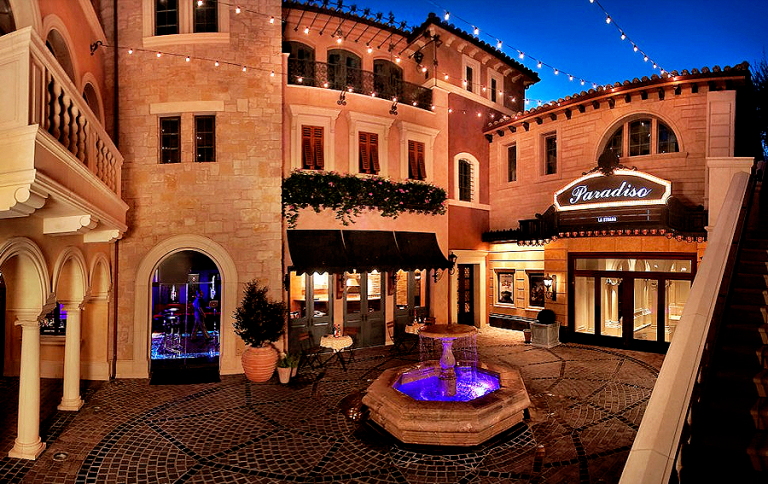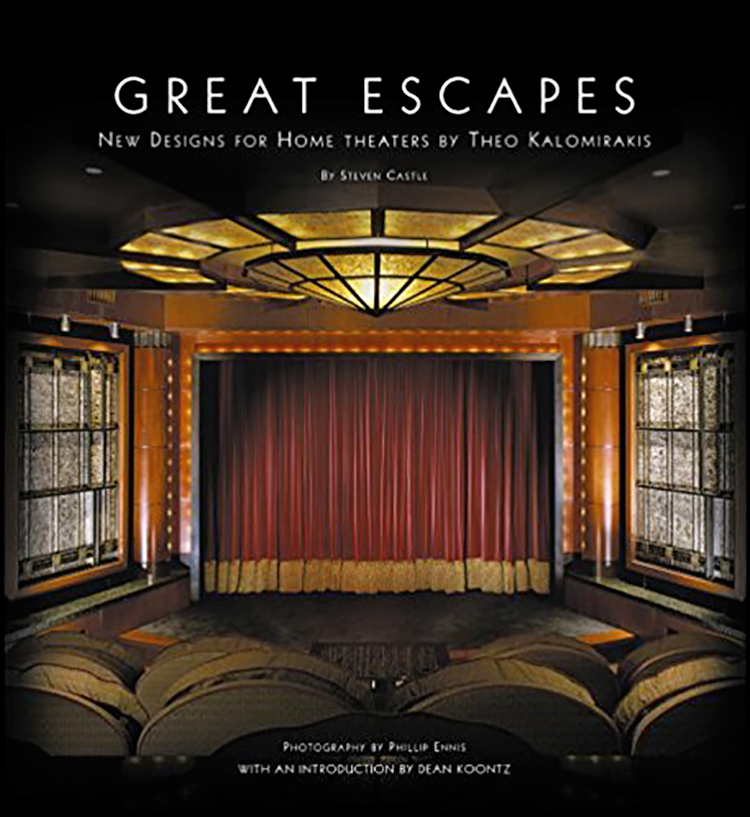A Tribeca Trendsetter
A Tribeca Trendsetter
The desire for a casual movie-watching space in this apartment’s main living area led to the creation of a high-performance hideaway theater
by Michael Gaughn
November 29, 2018
Ed Gilmore casually bringing some shots of a project he’d done in Tribeca up on his computer monitor was a major “a-ha” moment for me. The first shot showed a stylish, obviously comfortable living area that also served as a billiards room, dining room, and kitchen. The second showed the same room transformed into a home entertainment space a lot of people would die for. That, a completely intuitive part of me screamed, perfectly represents the new paradigm.
Others apparently agree with that conclusion because people just won’t leave Ed alone about the Tribeca space. Ironically, even he admits it’s not perfect—but it’s getting there, as the client invests more and more in turning what was initially a whim into a room that can blow a typical movie theater out of the water.
Having since had a chance to actually visit the space, and to shoot some video there, I recently circled back around with Ed to talk about all things Tribeca.
People seem to love that installation because it says that almost any room can now be transformed into a legitimate entertainment space.
I think what we did was to, in a minimally invasive way, create a home theater experience in a room that, if you looked at it from any angle, you would immediately say it couldn’t be done there. There was just no way.
Aesthetically, the room had already been designed before you came into the picture. How were you able to navigate those waters?
We just needed to be open and try to find really unique solutions that would both satisfy a high-end level of performance as well as maintain a certain aesthetic value the client wanted us to maintain, and be true to the bones of that room. I don’t think that’s any rare talent. The issue was that he had interviewed a lot of other AV guys who told him right off the bat, “No, we won’t do that.” And that wasn’t the answer he wanted to hear. So we were lucky enough to be able to convince him that we could do it, and it could be compelling.
Tribeca video | Alyssa Neece
“We needed to be open and try to find unique solutions that would both satisfy a high-end level of performance as well as maintain a certain aesthetic value the client wanted us to maintain, and be true to the bones of that room.”
—Ed Gilmore
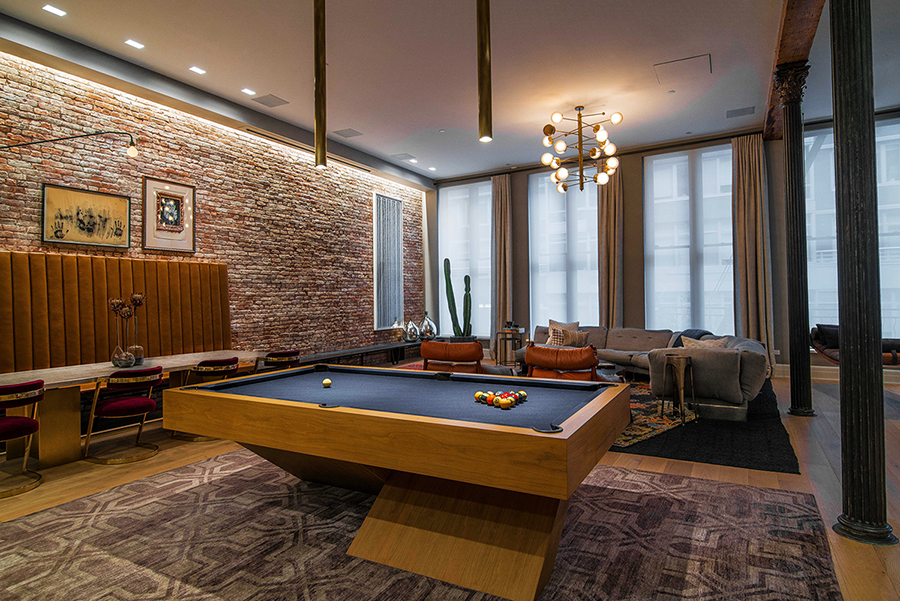
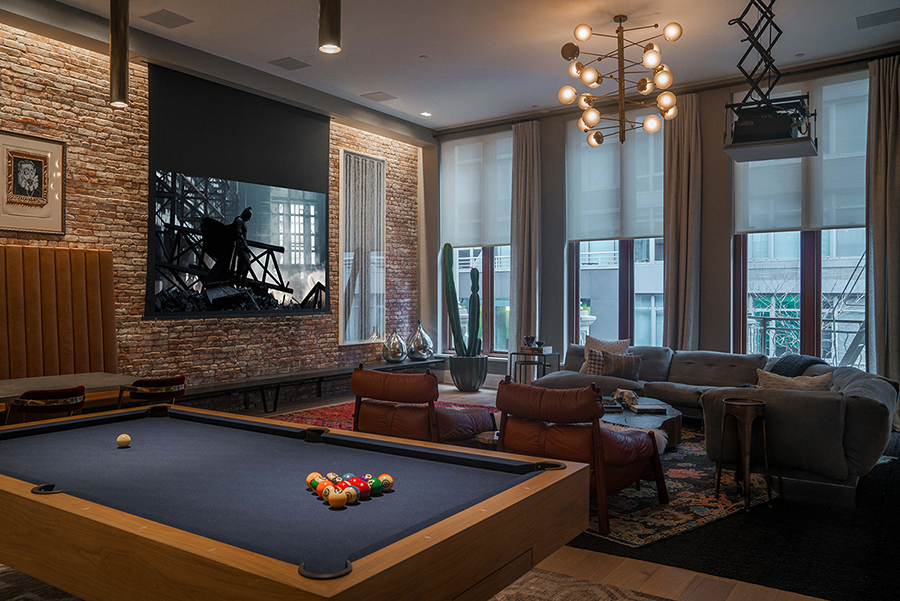
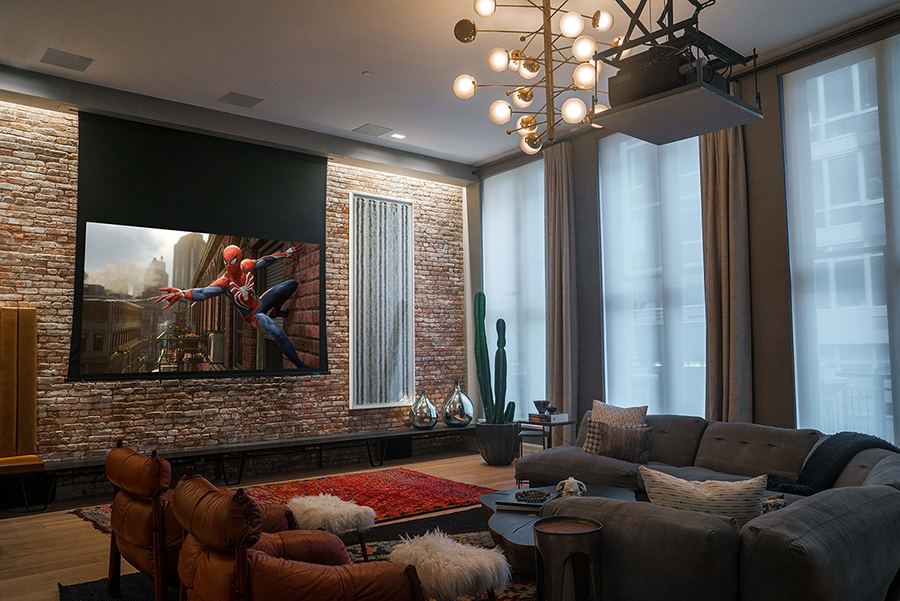
a retractable screen, ceiling speakers, and a projector on a lift allow the apartment’s main living area to be transformed into a better-than-movie-theater entertainment space
That communal area wasn’t supposed to be the main entertainment space, right?
Right. The den is the room where he really sits and watches most of his TV. That was the room he wanted to spend some money on. This other room was kind of an experiment for him.
But as he saw it implemented, immediately he thought, “I’m going to sink some more money into this room.” And that’s exactly what he did. That’s what he did with the Kaleidescape Strato, that’s what he did with the Steinway Lyngdorf, and what he’s about to do with projection, by upgrading the projector there as well.
Are people fascinated by that room because it’s a kind of outlier or because it represents a trend?
I think it’s a little bit of both. It’s tapping into a trend, that trend being that people aren’t interested in having dedicated rooms for specific purposes like a theater, or even a dedicated music room.
There’s also an aspirational aspect to it as well. It resonates with people because it’s well done. I mean, it’s a really beautiful space. And it’s well thought out. And that goes back to the developer, who did a really nice job on that building. The dimensions of the room are great, and it has this wonderful warm feeling to it without really needing much in terms of other types of interior design.
But these particular clients do have taste, and they’ve been around the block a few times in terms of renovations. He is a serial renovator. And so their choice of artwork, their choice of furnishings—those little details that they have there are great. And I think that resonates with a lot of people, too.
If luxury is really about details—about somebody caring enough to make sure every last thing is done right—Tribeca would seem to qualify.
I think you and I agree on this, right? Attention to detail is really what matters in a luxury space. People have asked me about what luxury is, and I typically say that it needs to be inspirational. But that doesn’t mean it really needs to be noticeable. It’s something that kind of unfolds. And by the time you realize what’s happening, you’re kind of taken by surprise by it. And it’s organic—it feels like it was always part of what was meant to be there.
Michael Gaughn—The Absolute Sound, The Perfect Vision, Wideband, Stereo Review, Sound & Vision, The Rayva Roundtable, marketing, product design, some theater designs, a couple TV shows, some commercials, and now this.
about Gilmore’s Sound Advice
Since 1991, Ed Gilmore and Gilmore’s Sound Advice, Inc. have been designing, deploying, and servicing hundreds of integrated systems by strictly adhering to a word-of-mouth recommendation policy. Typical systems consist of audio & video distribution, home theater, lighting & shading systems, enterprise-level network/WiFi & telephony, along with HVAC & security systems integration. In 2016, Sound Advice created one of the most unique showroom & event spaces in New York City.
© 2025 Cineluxe LLC
